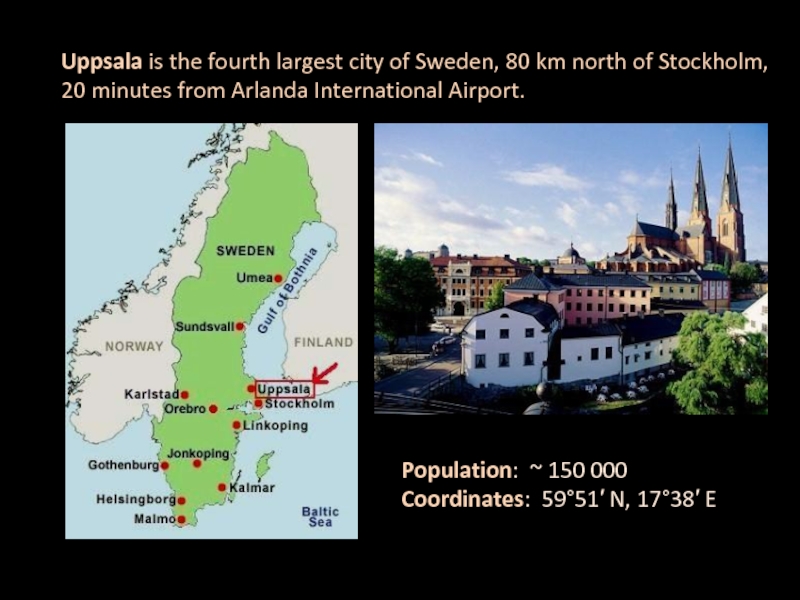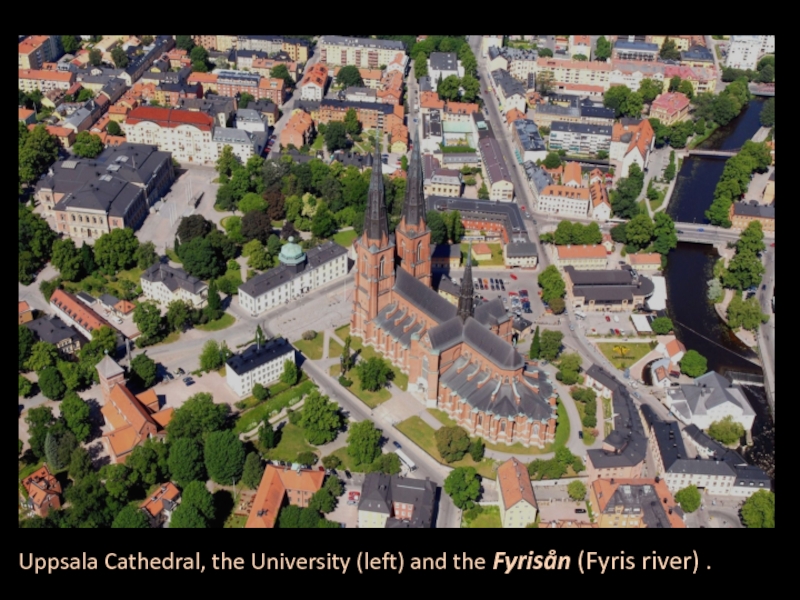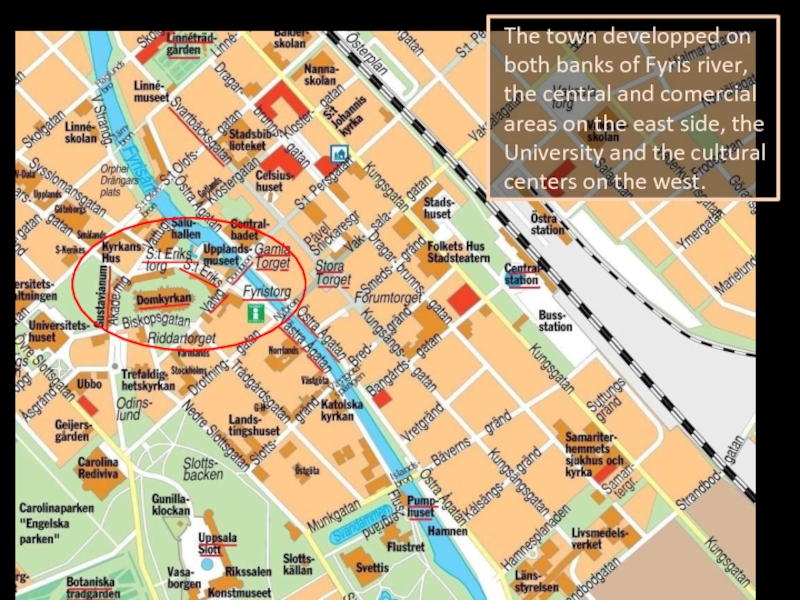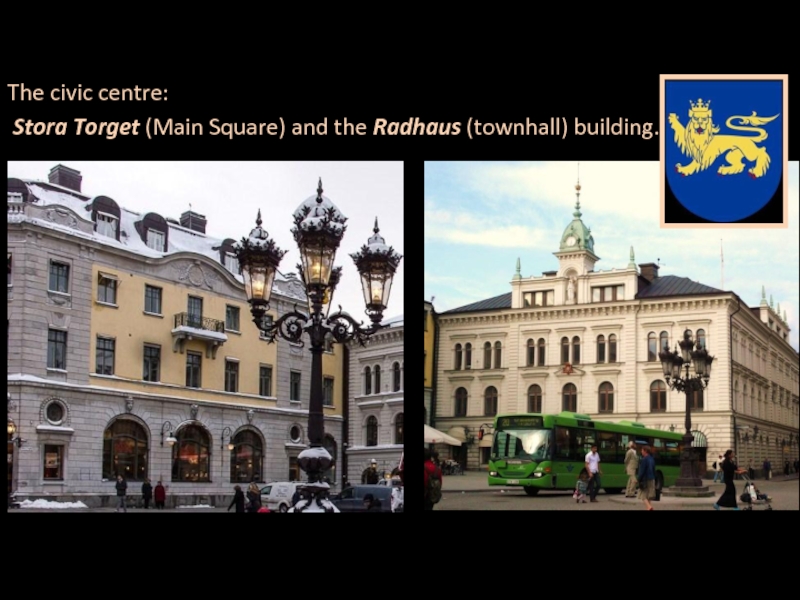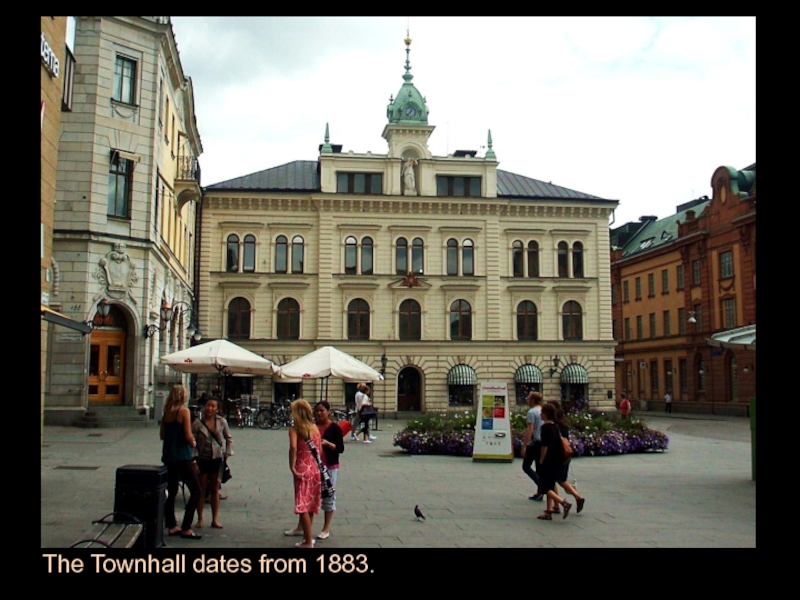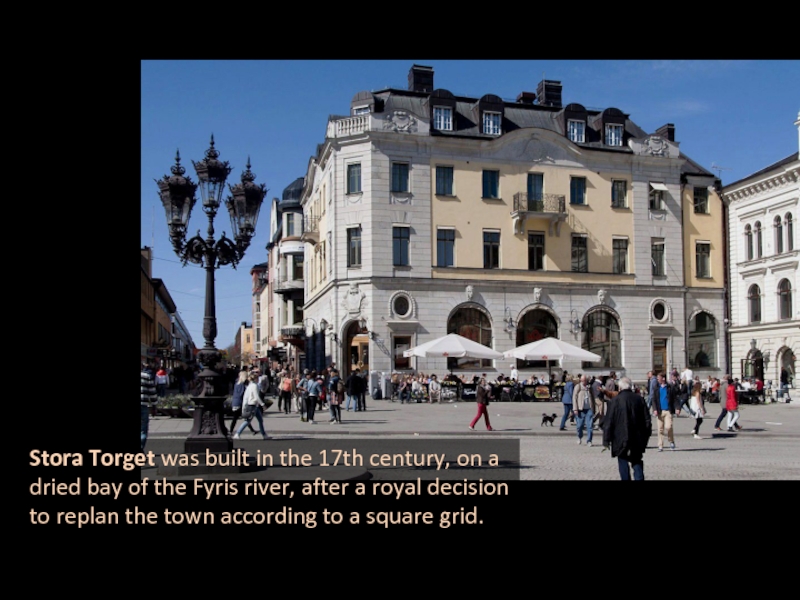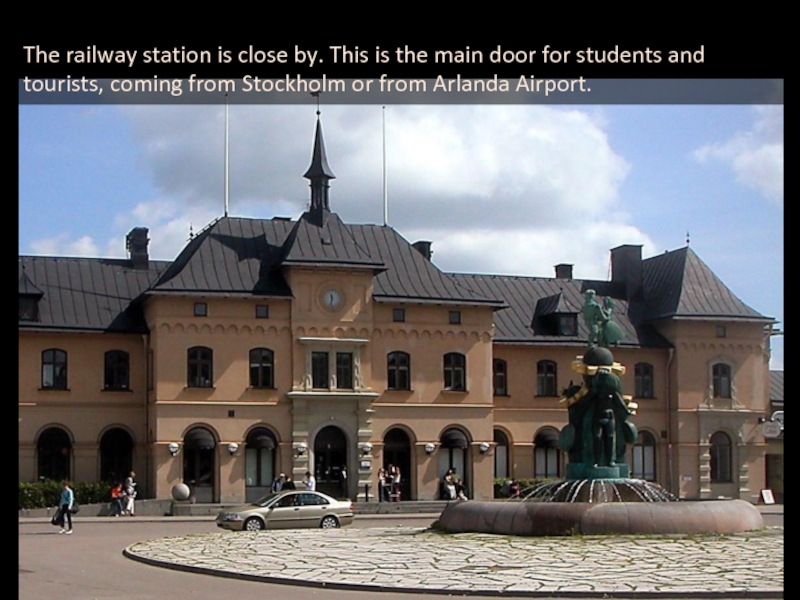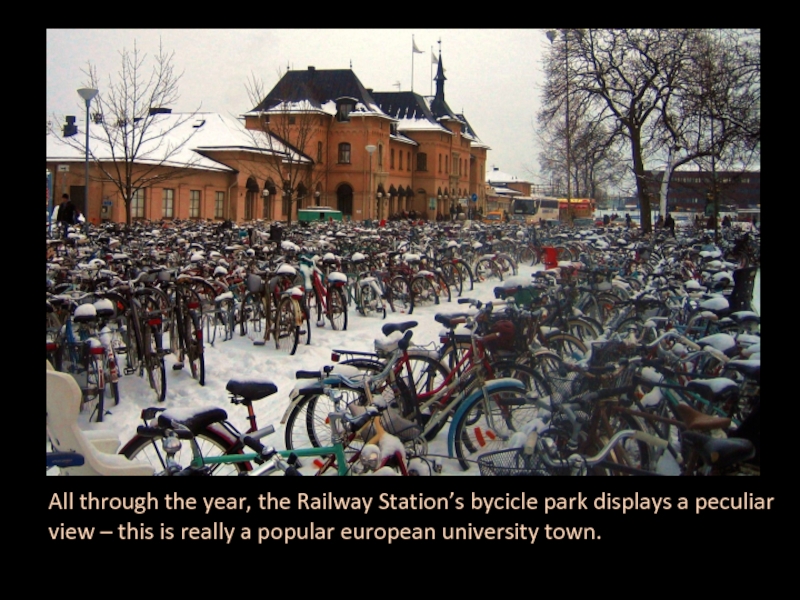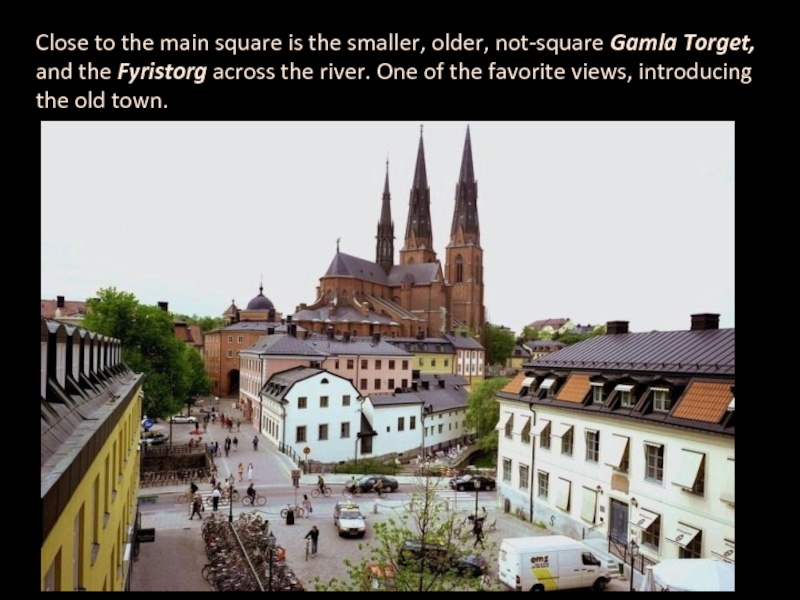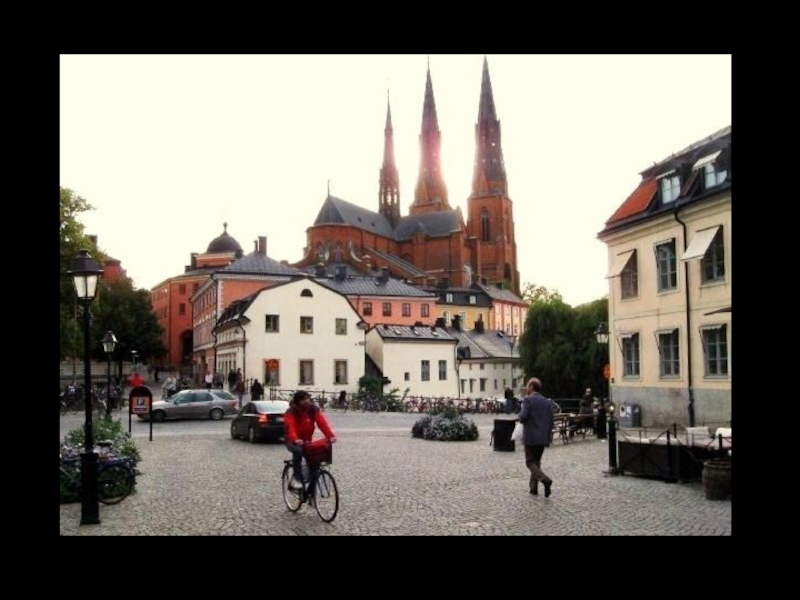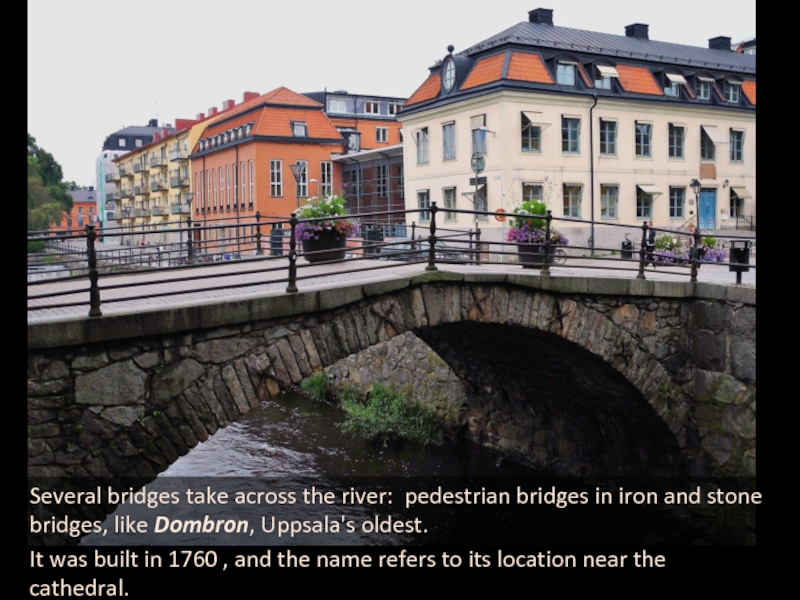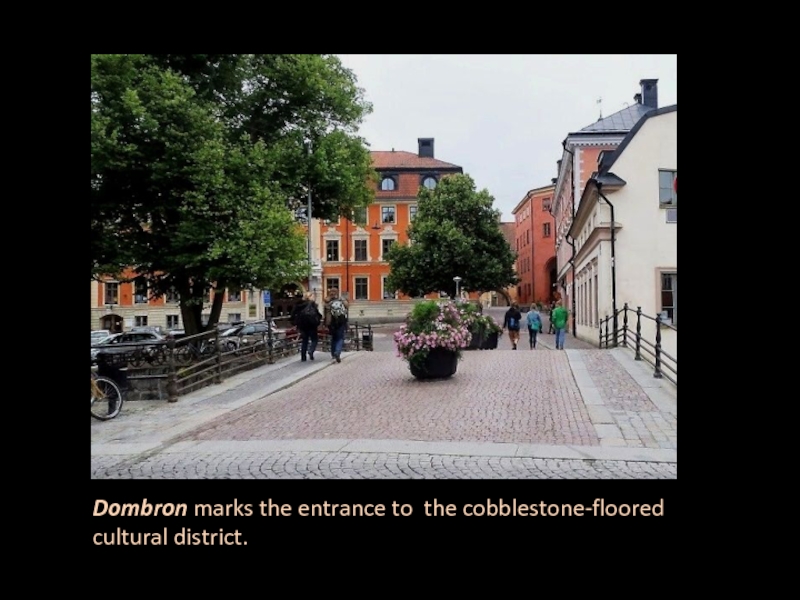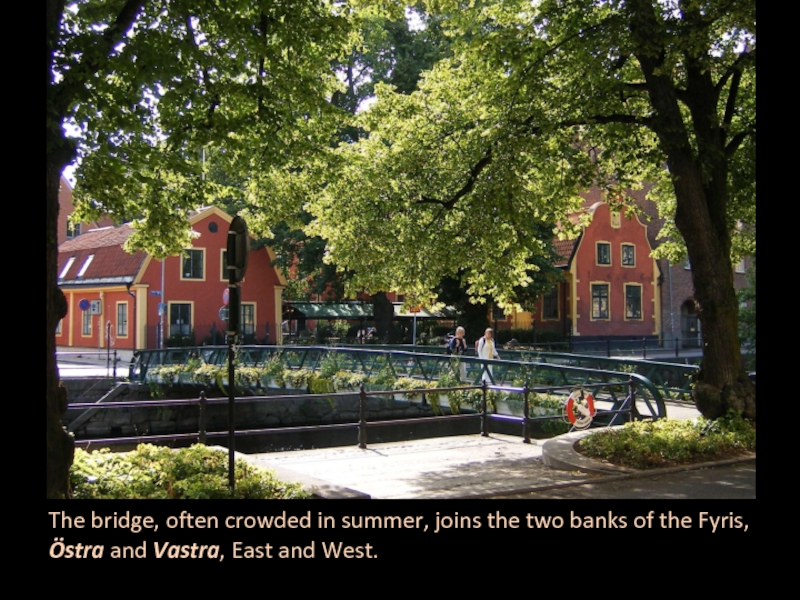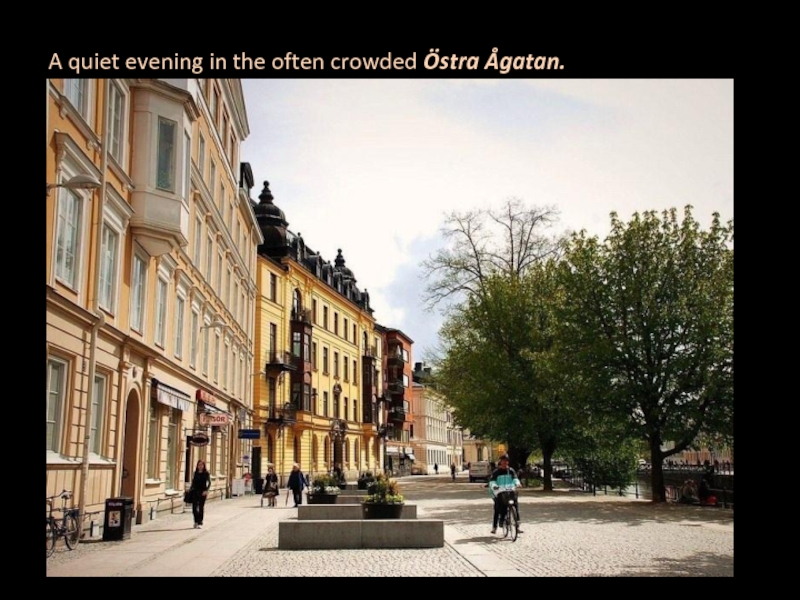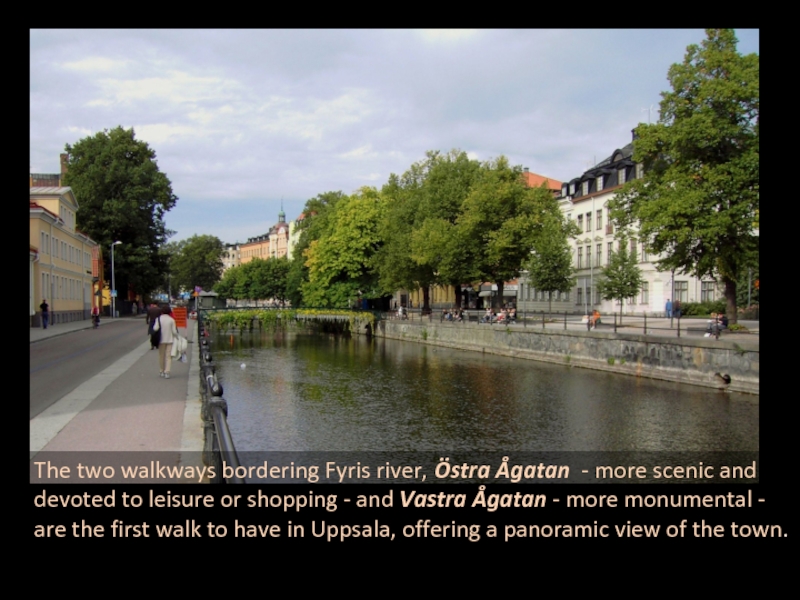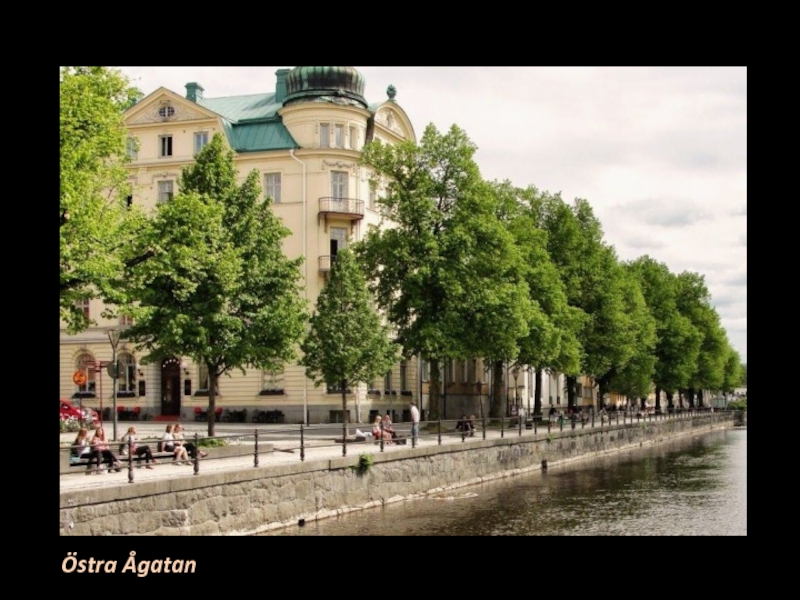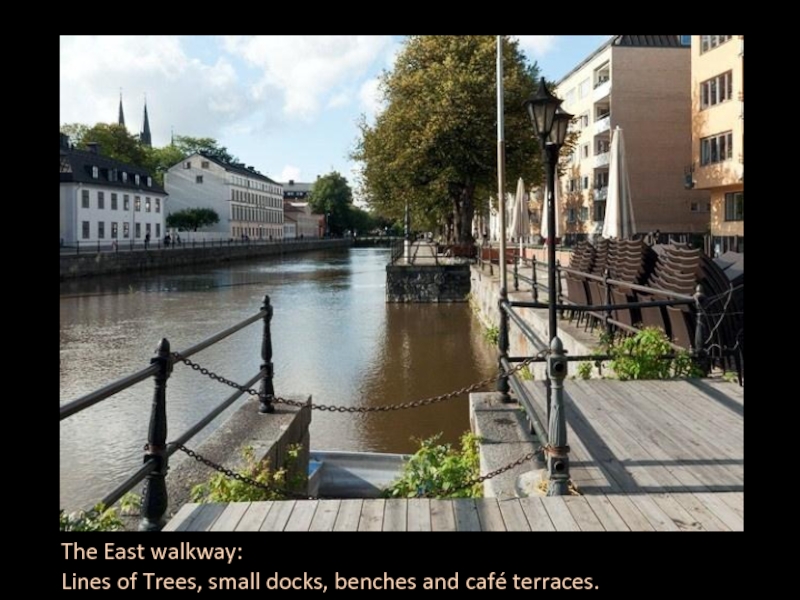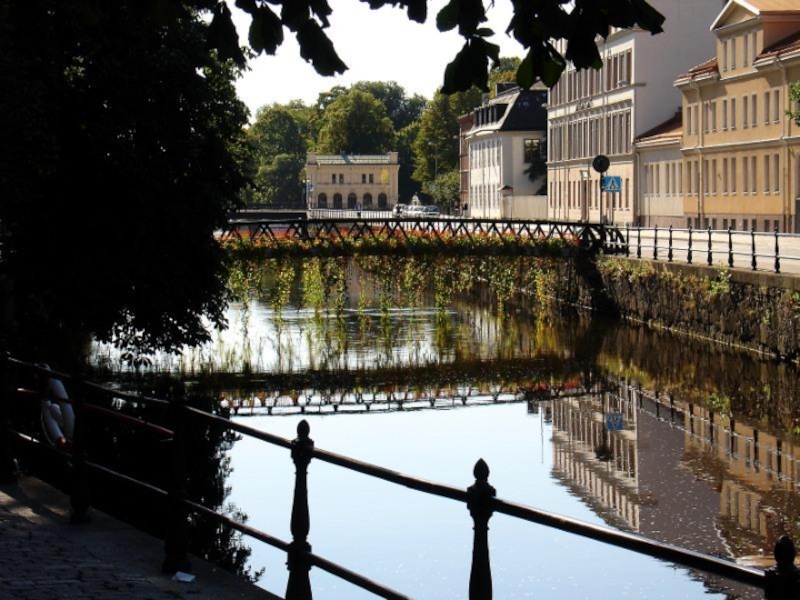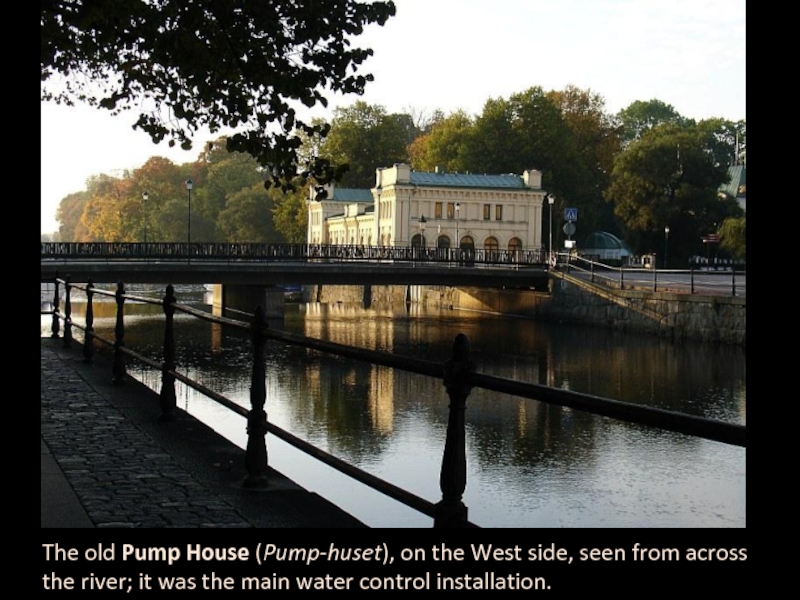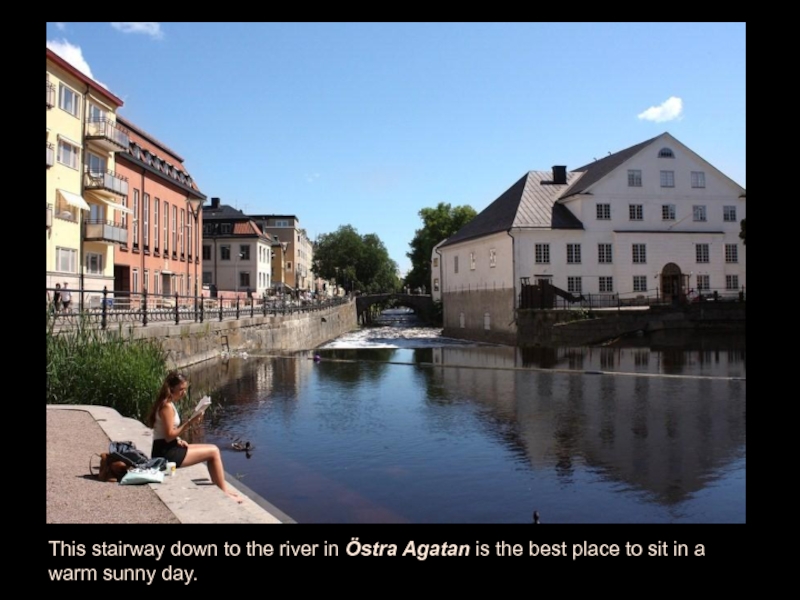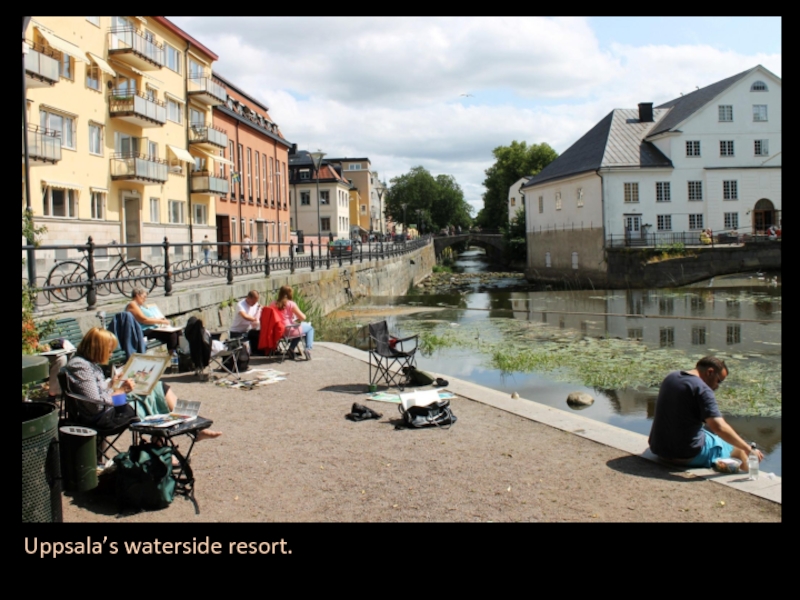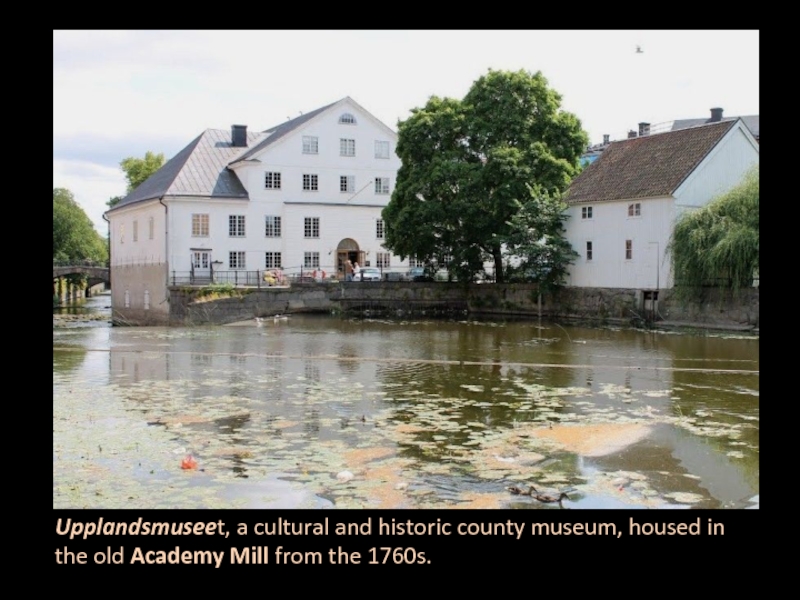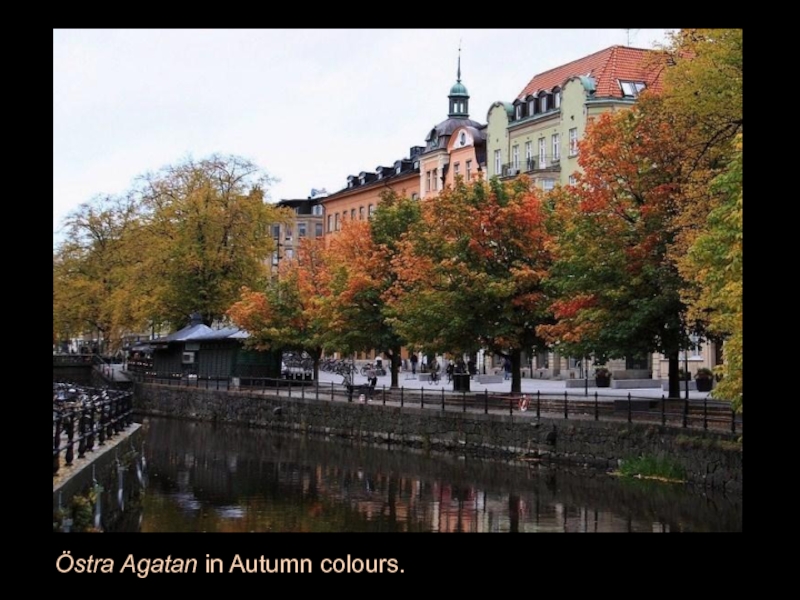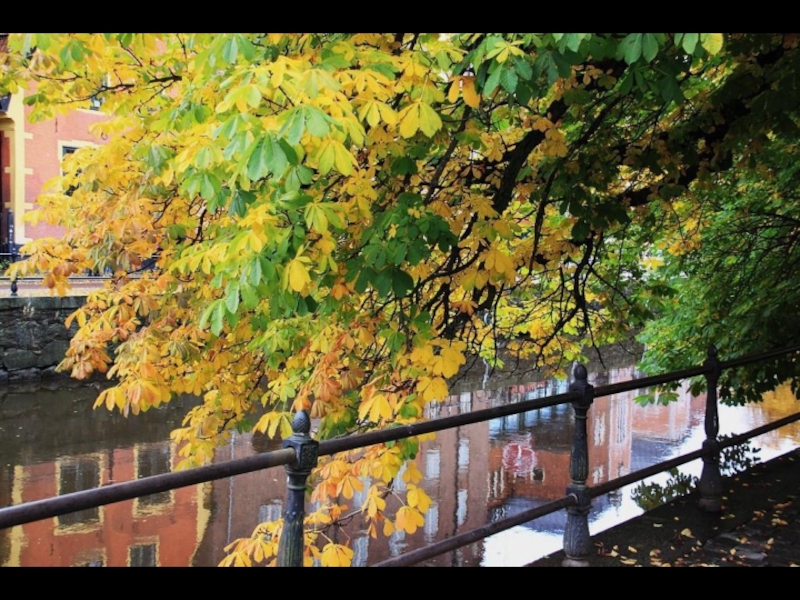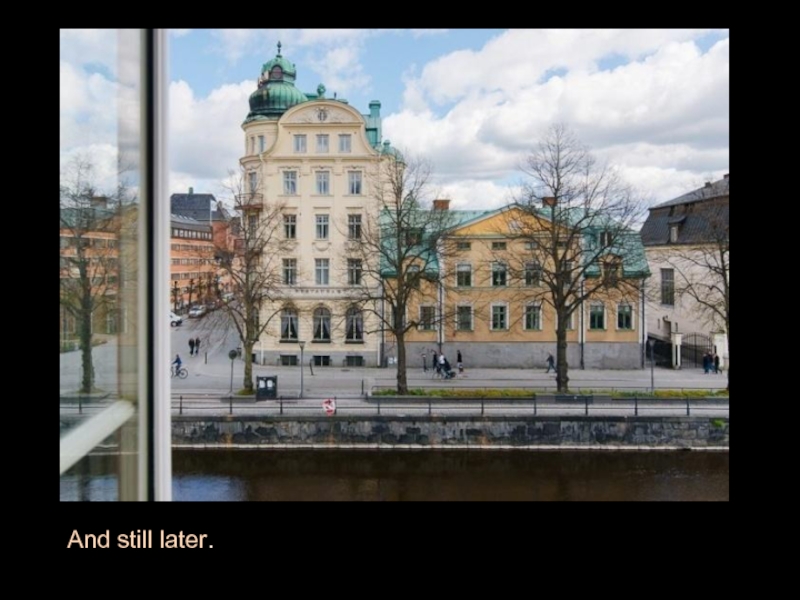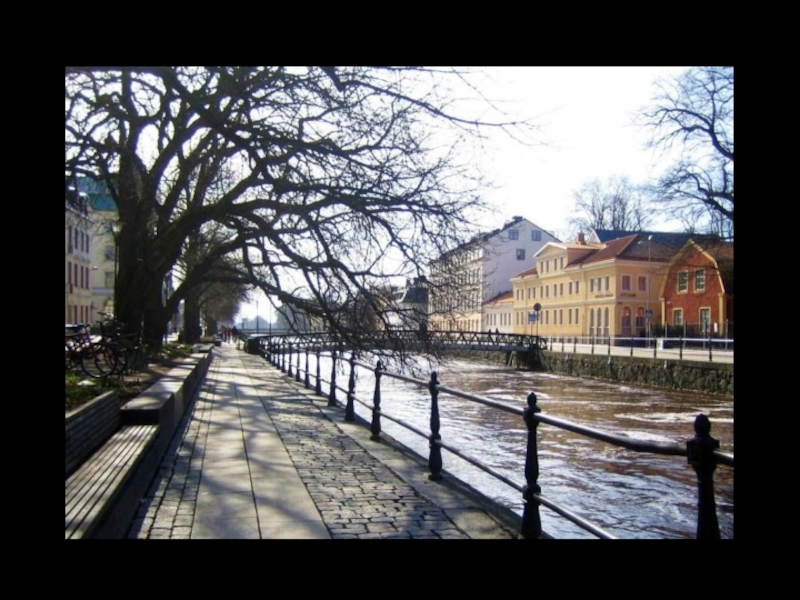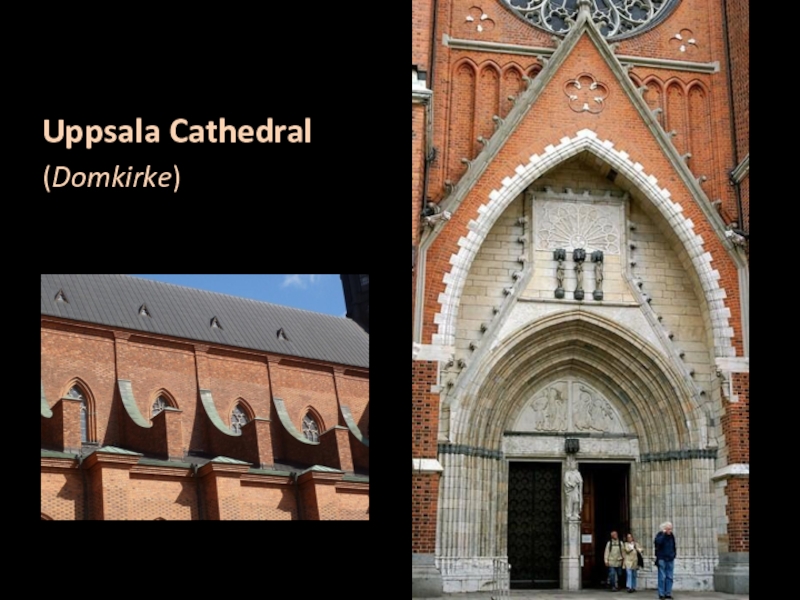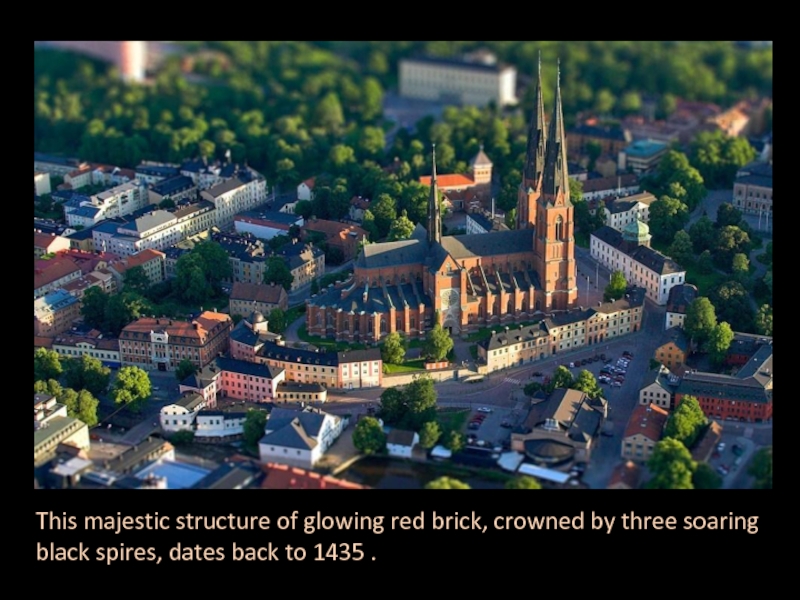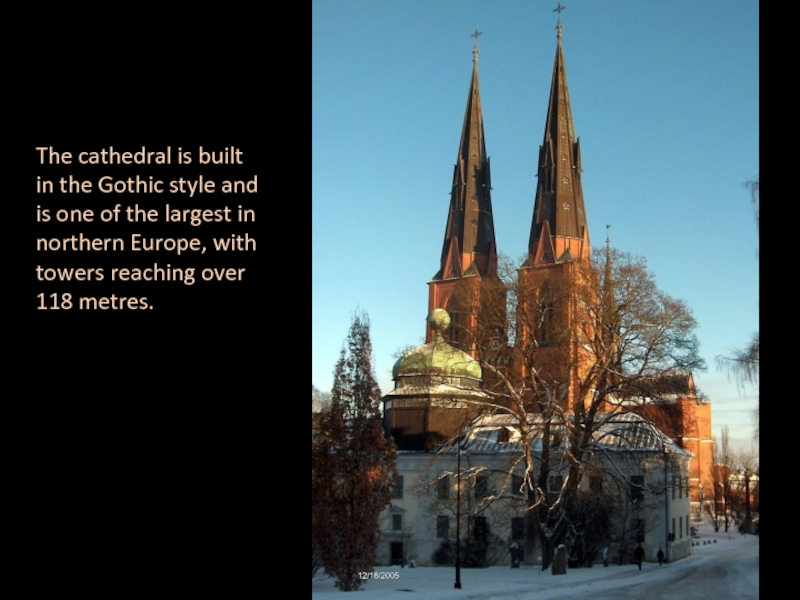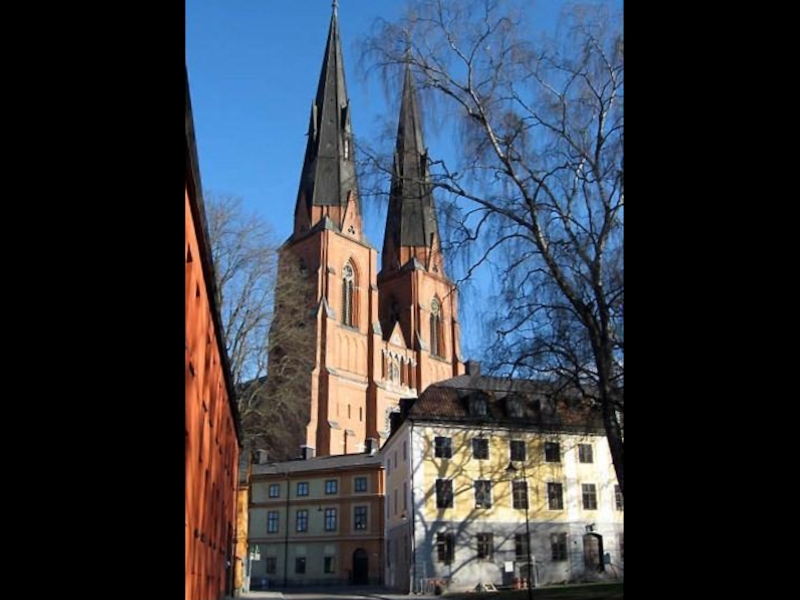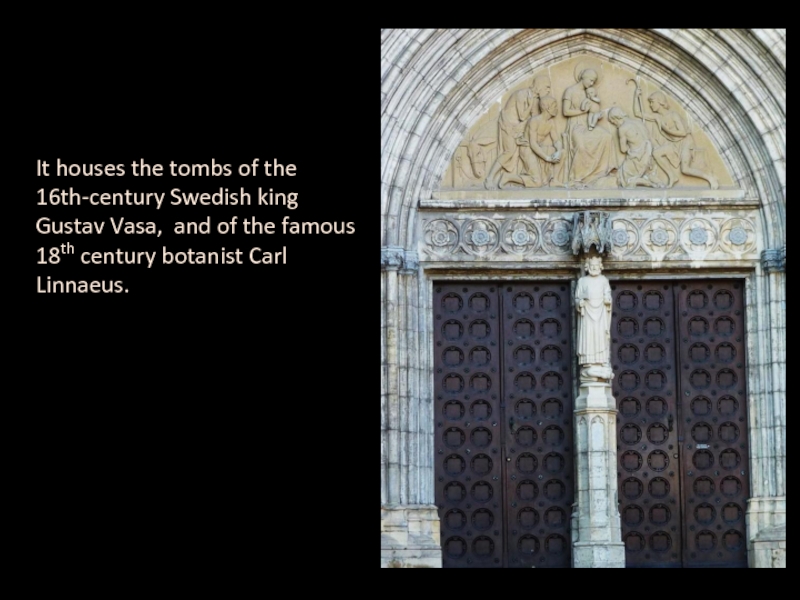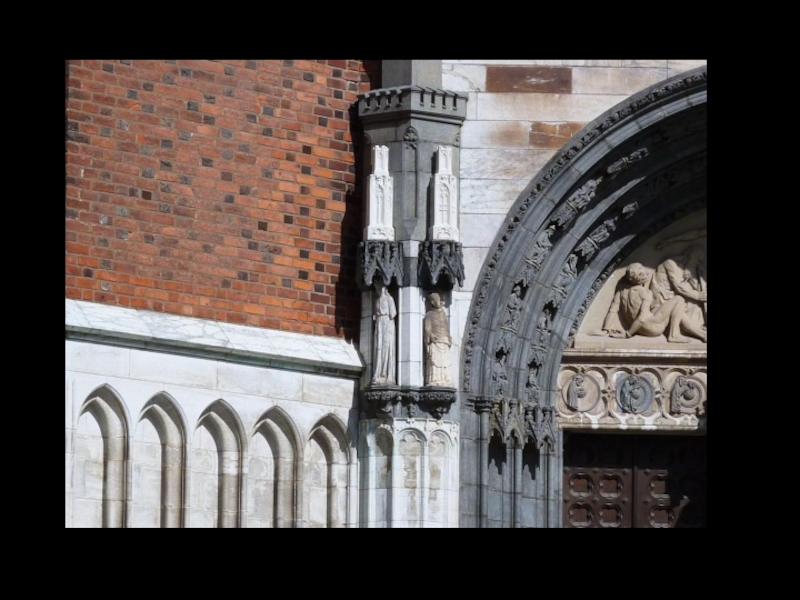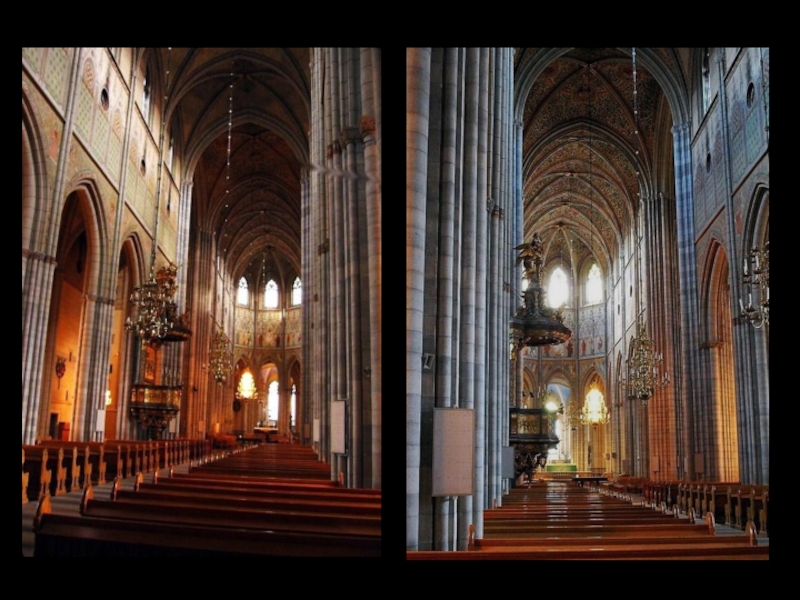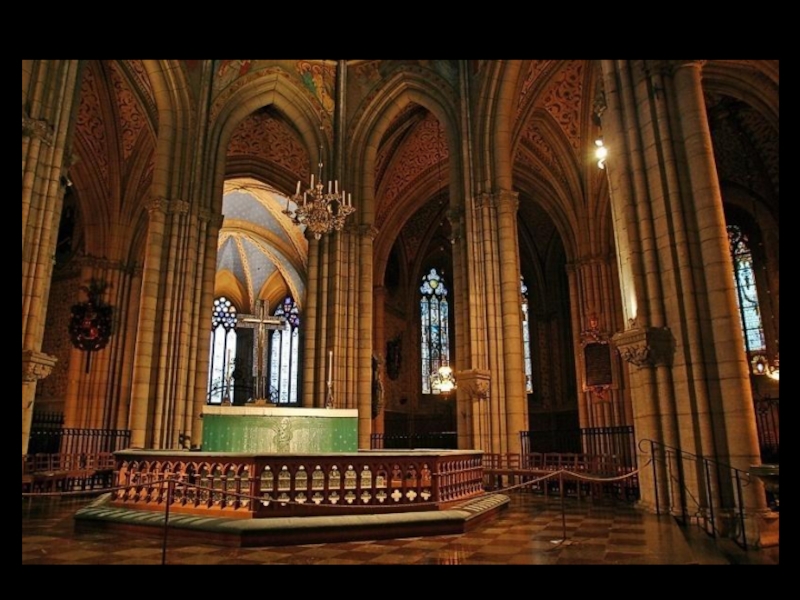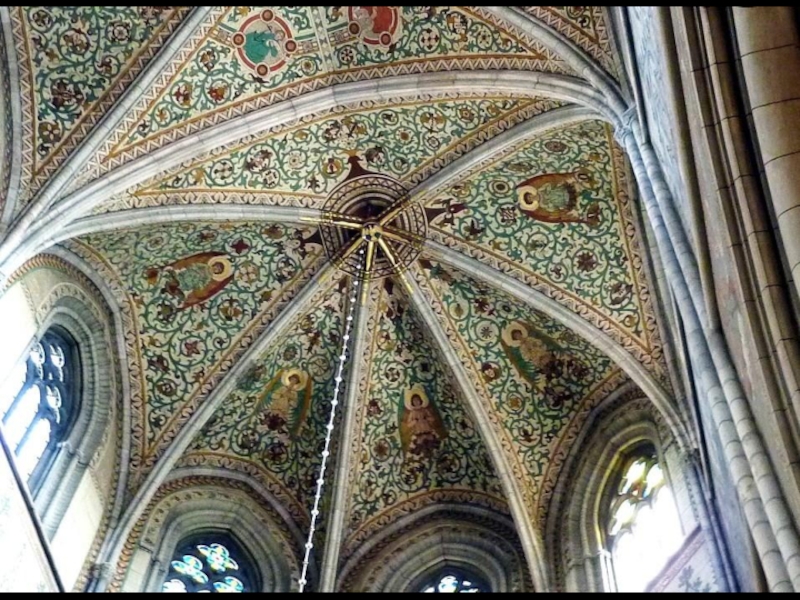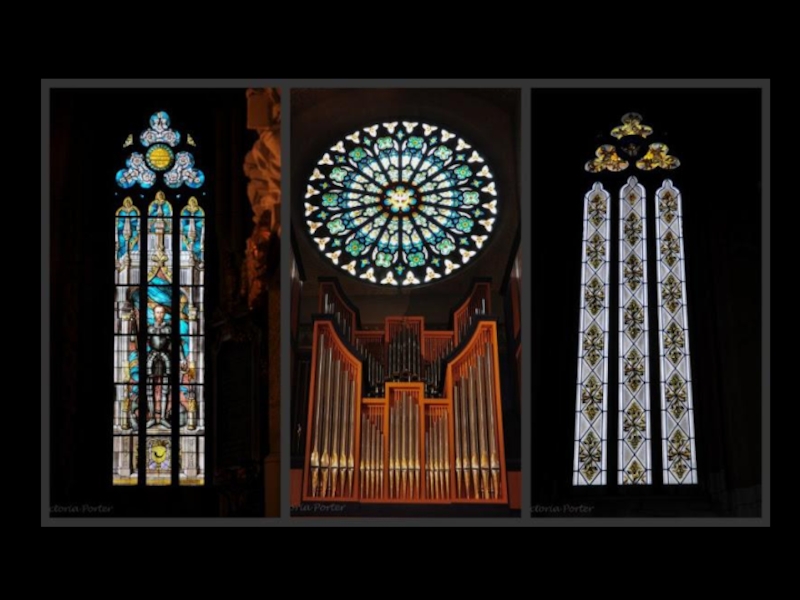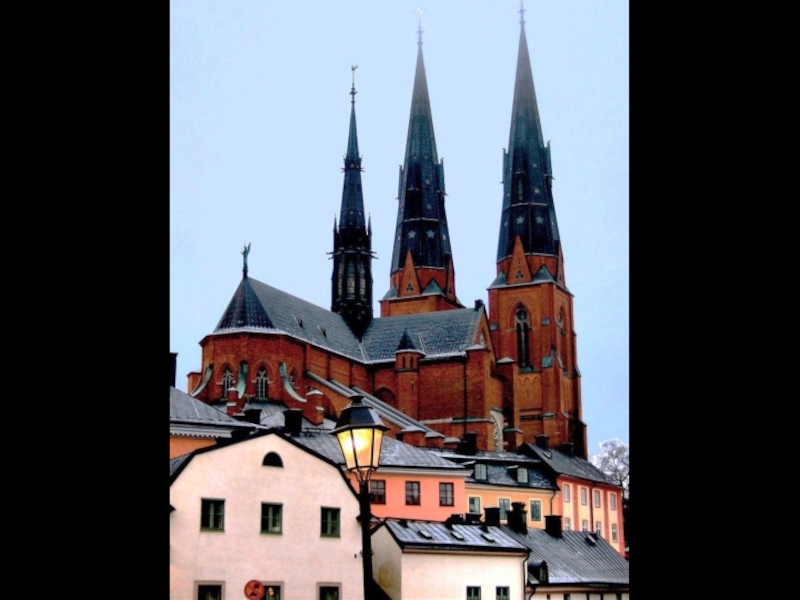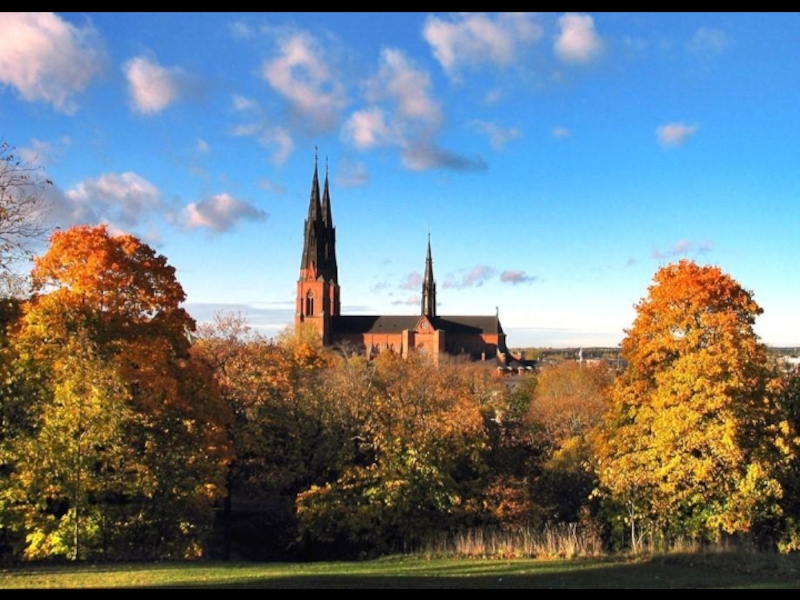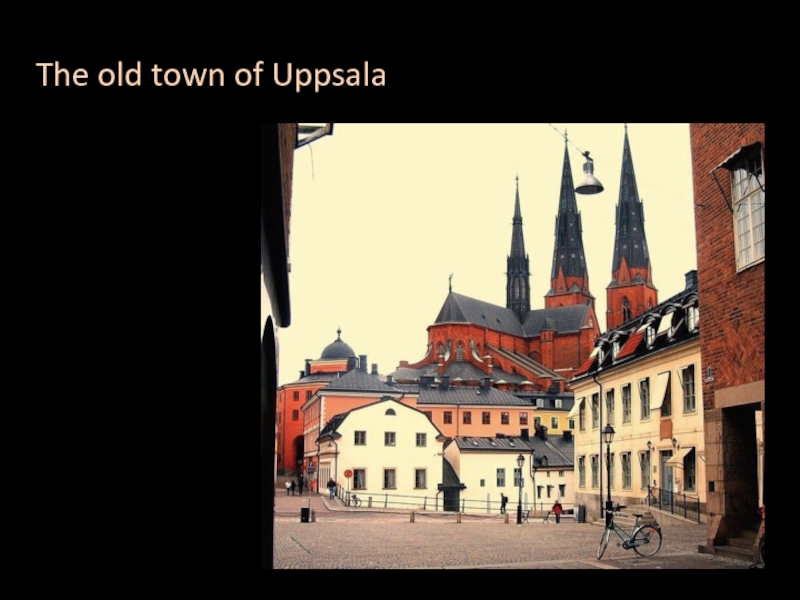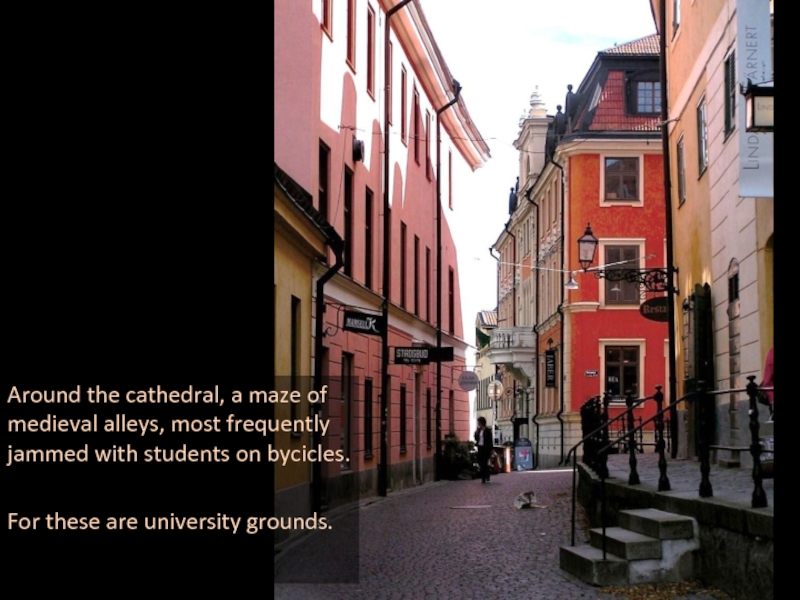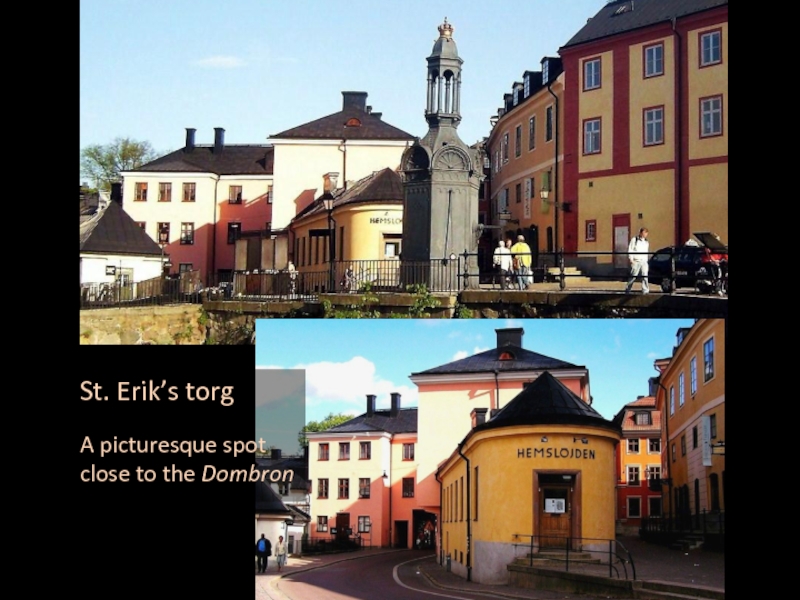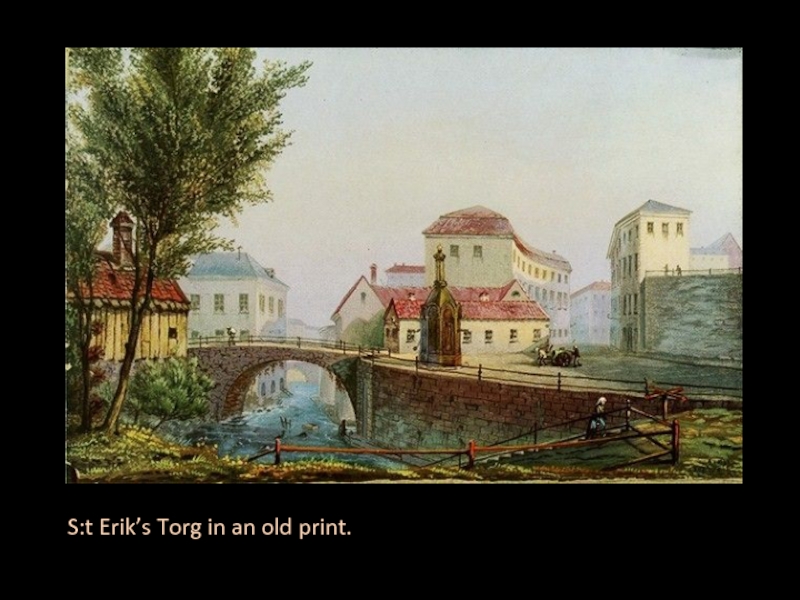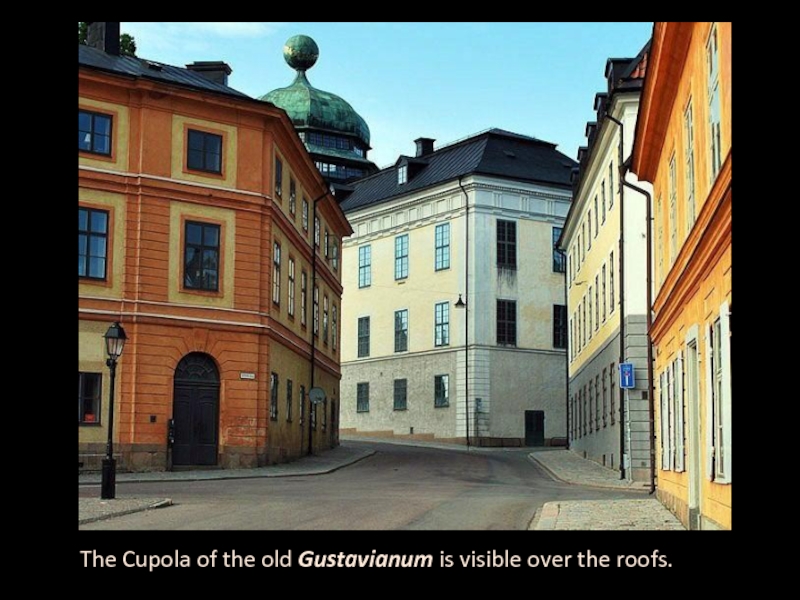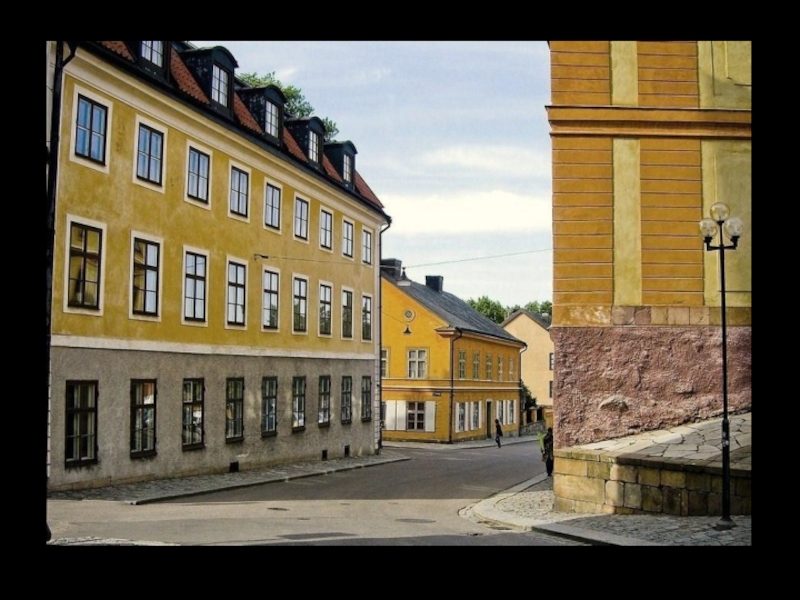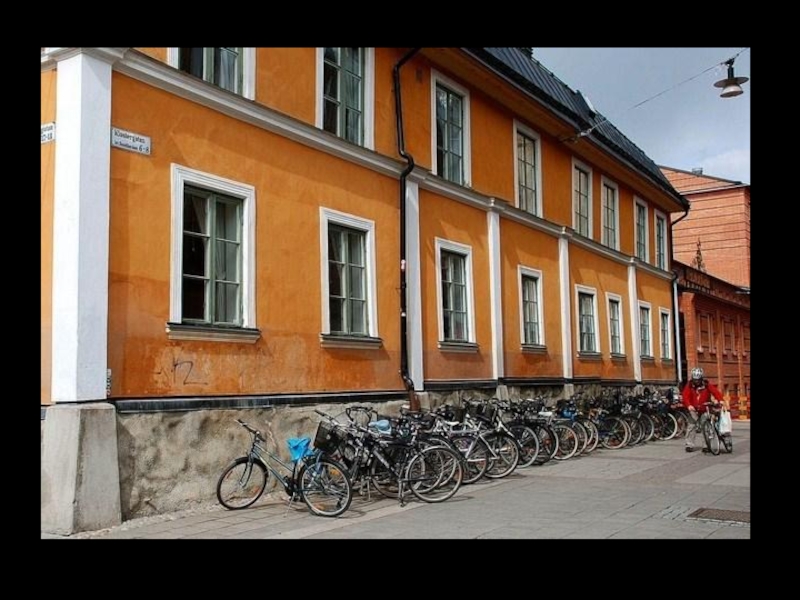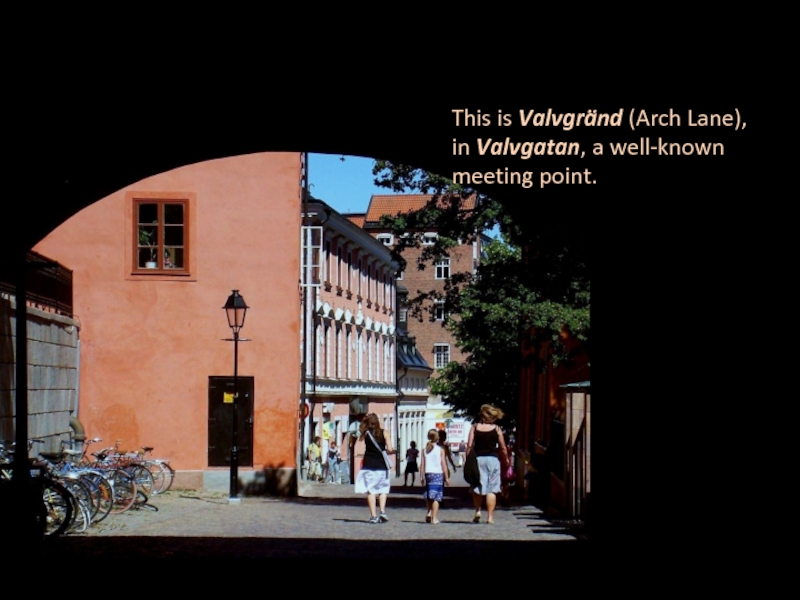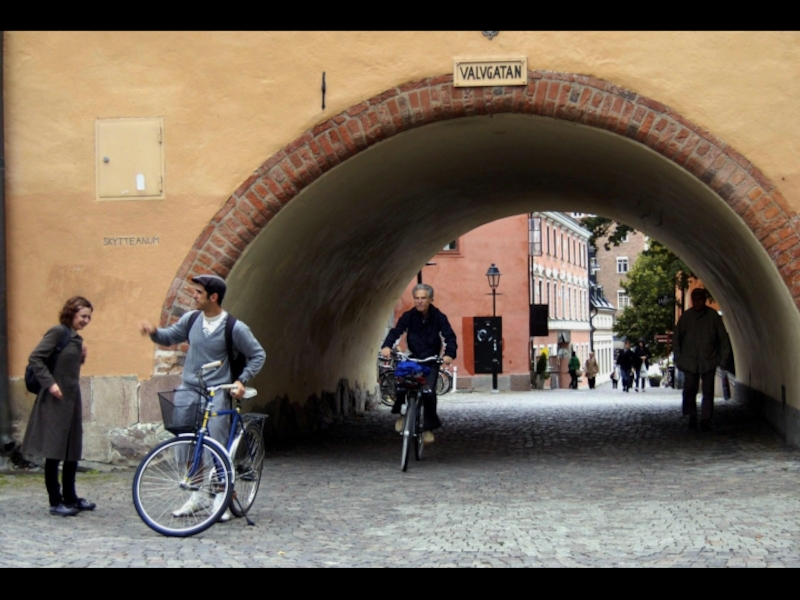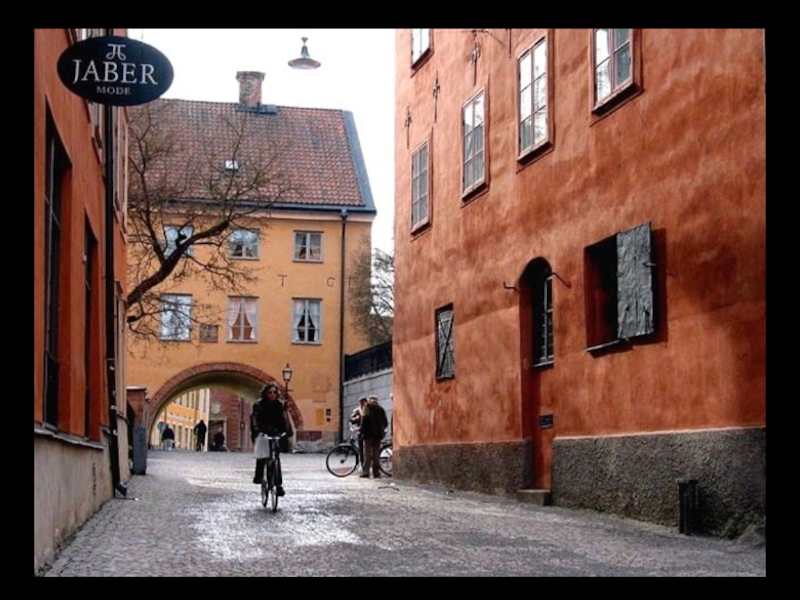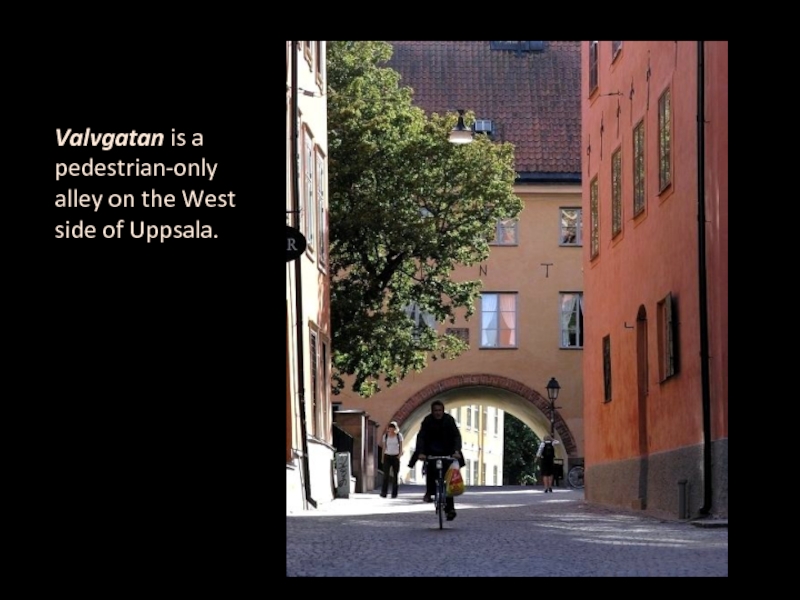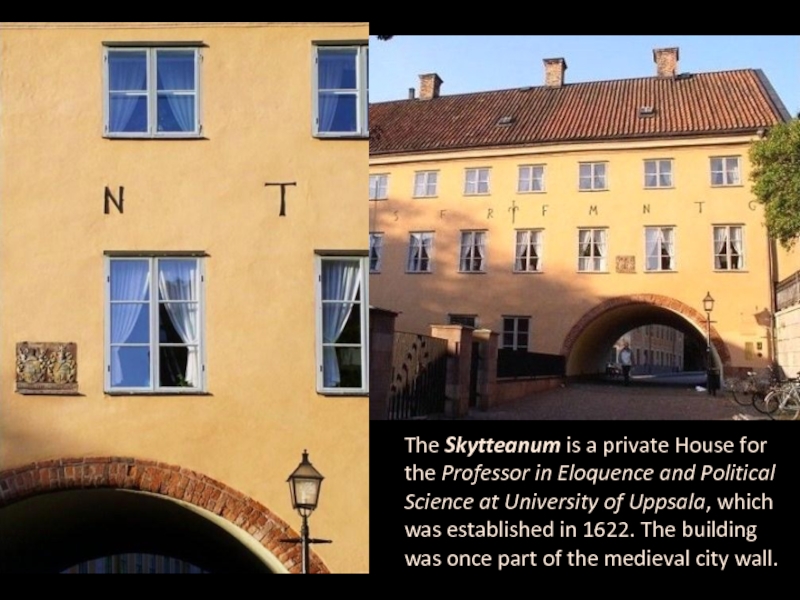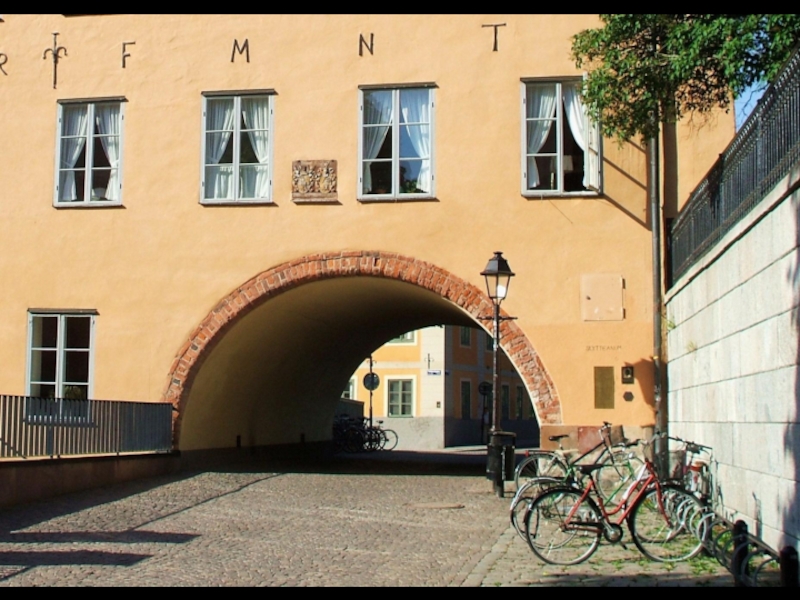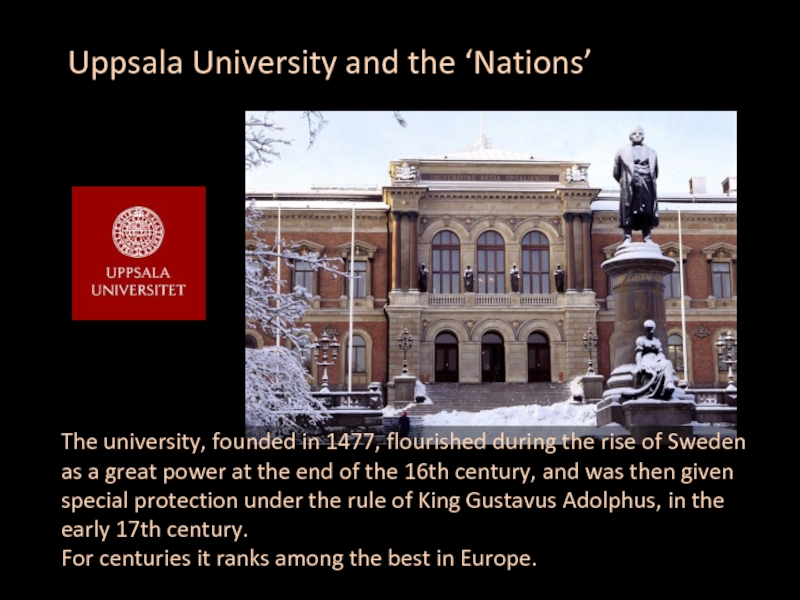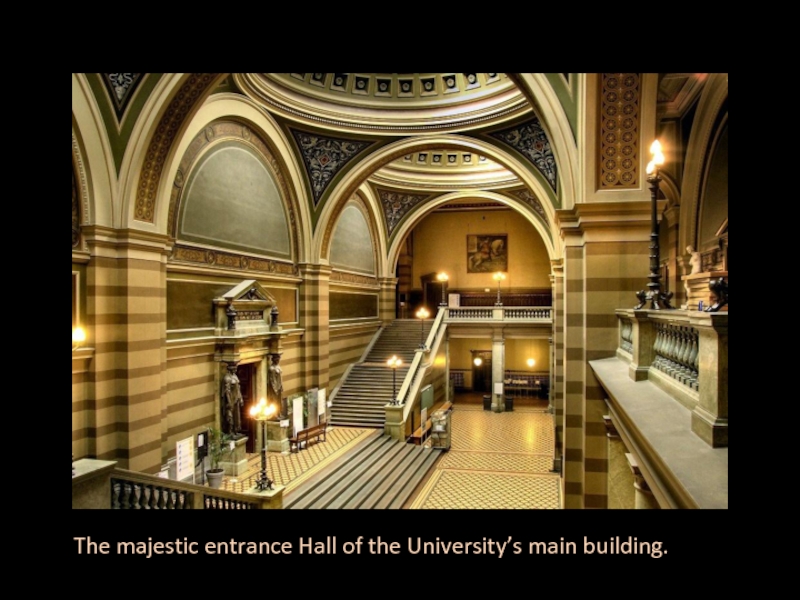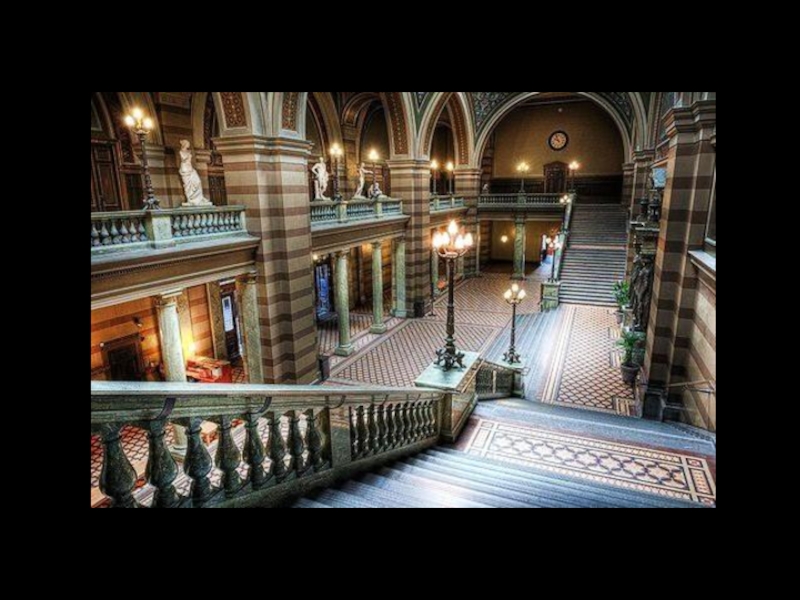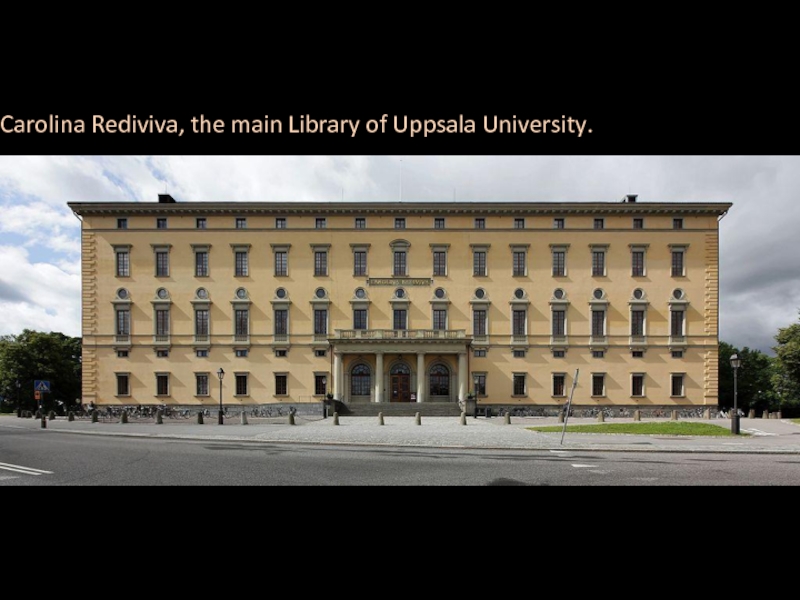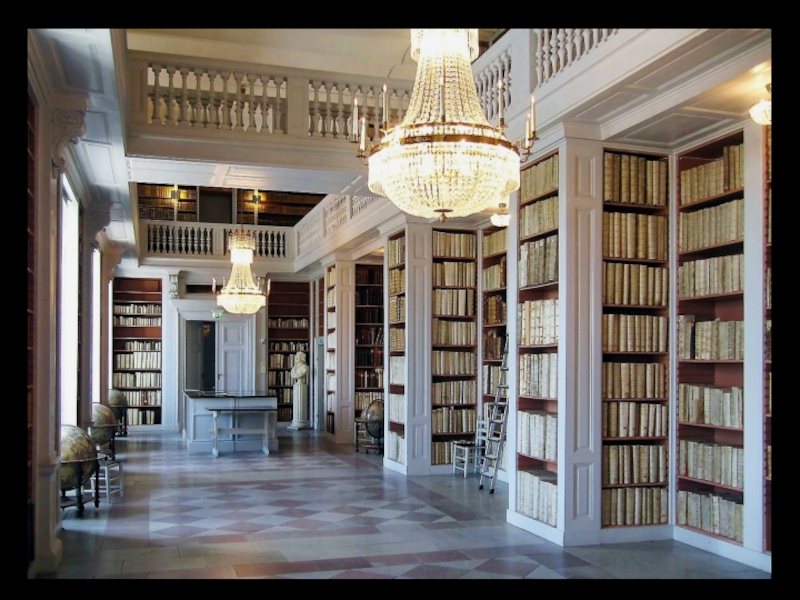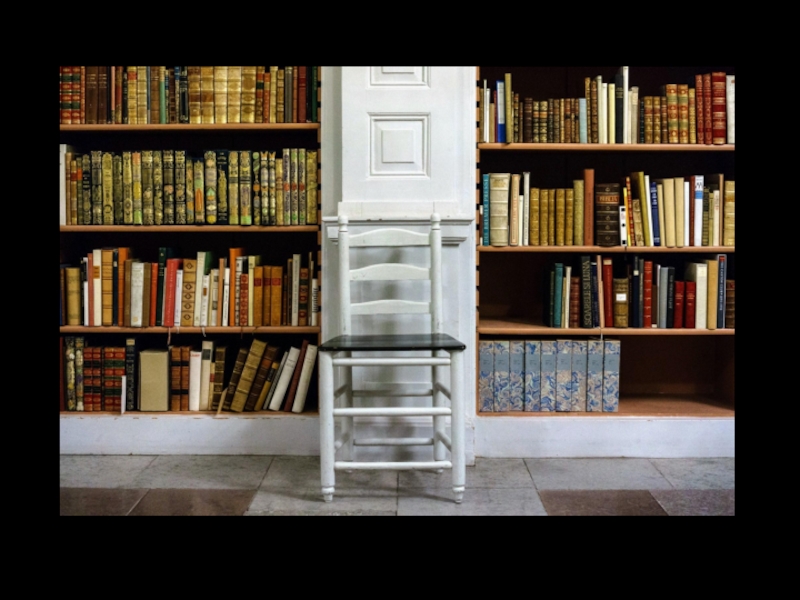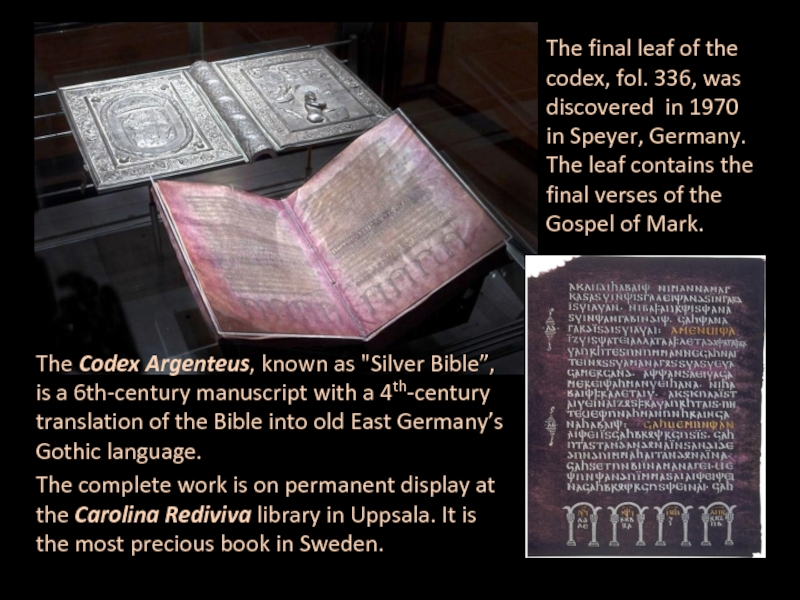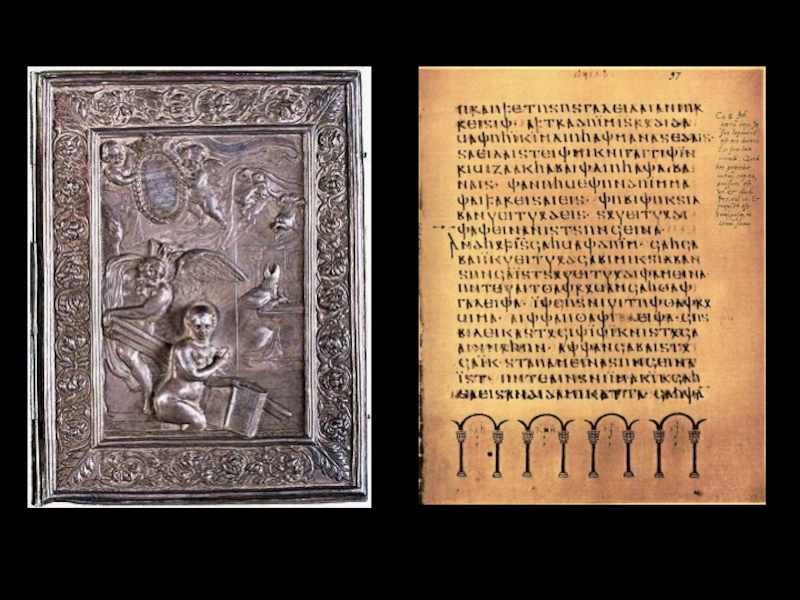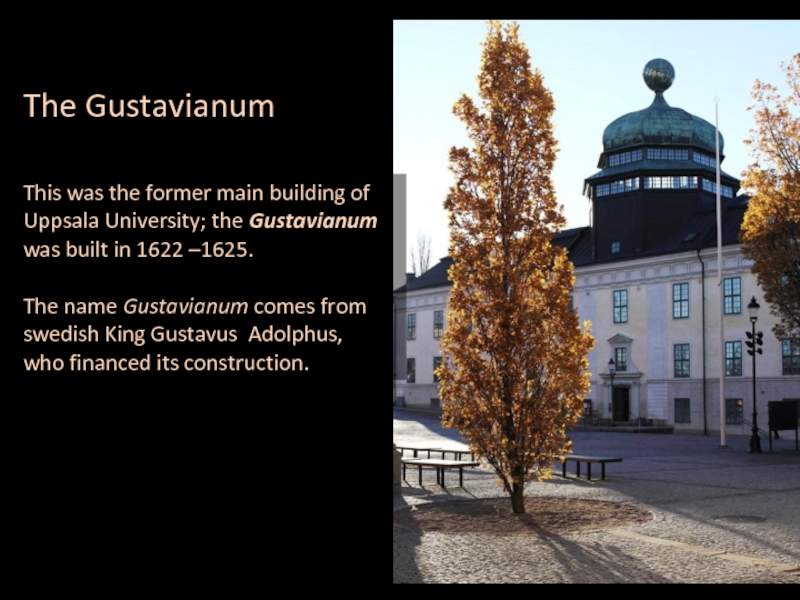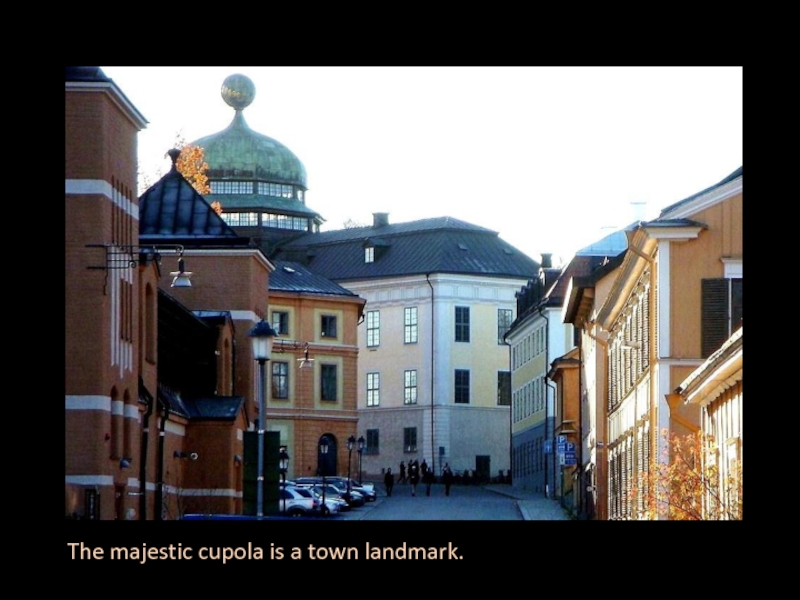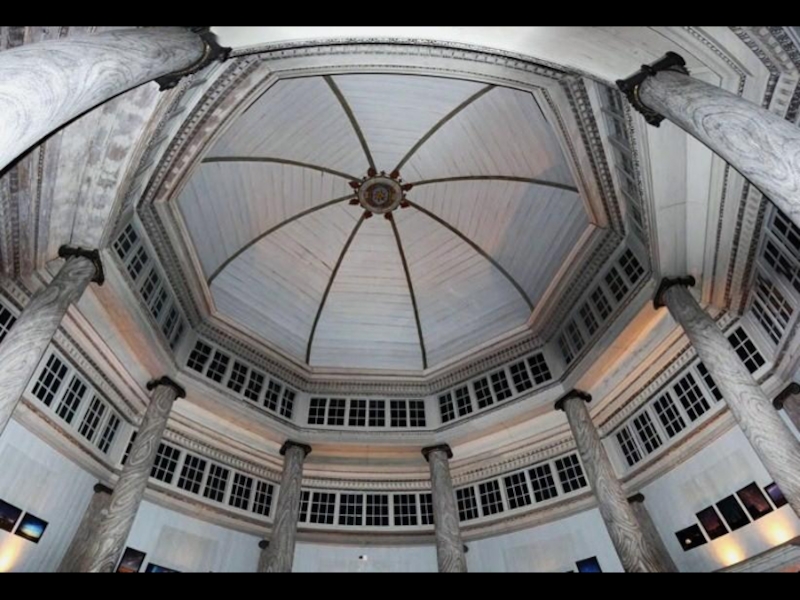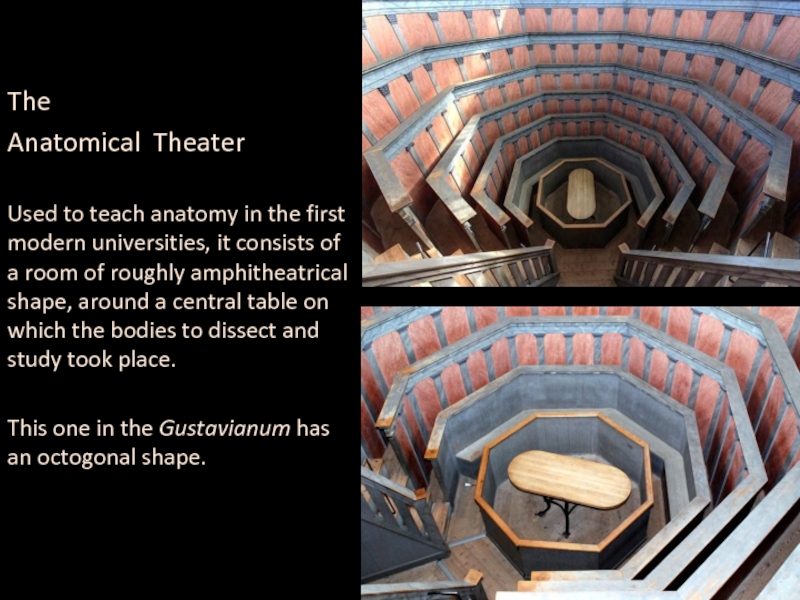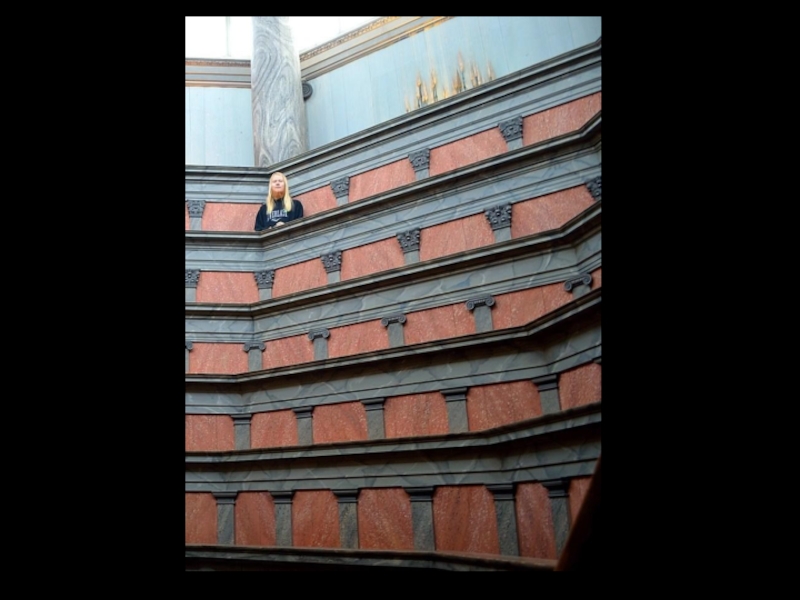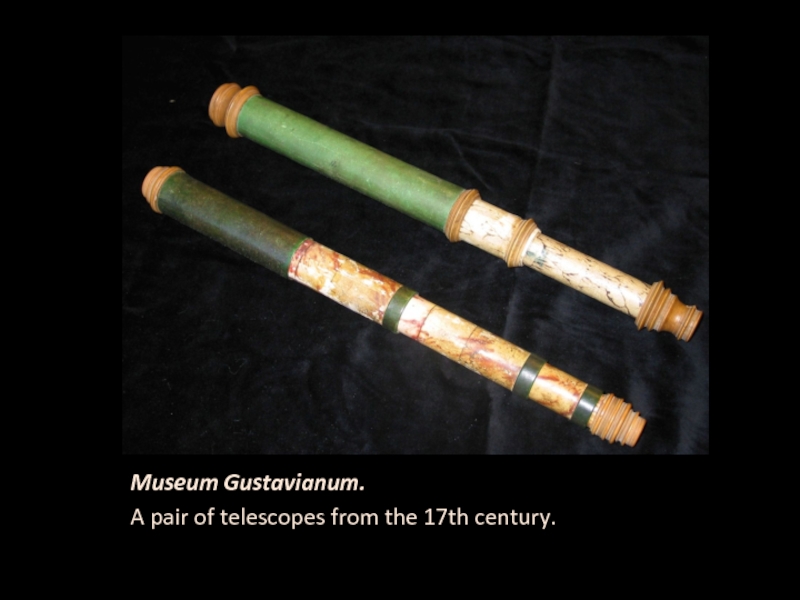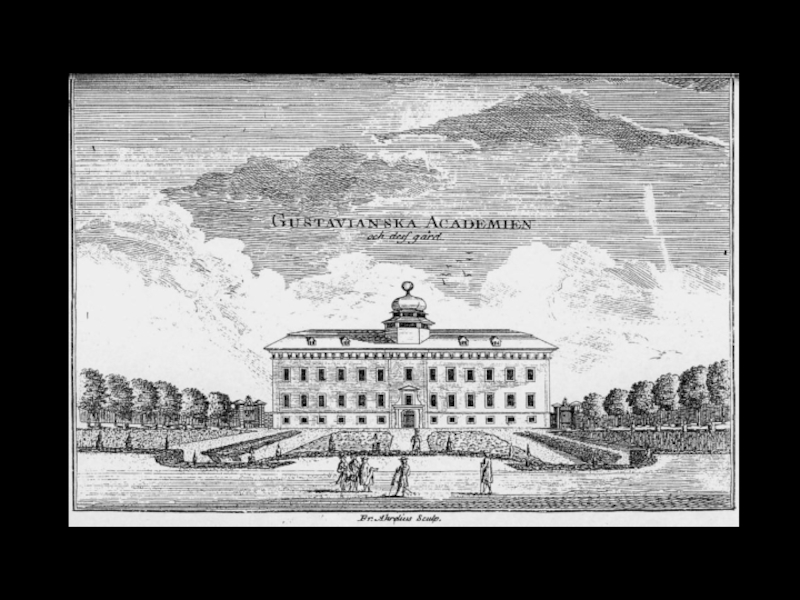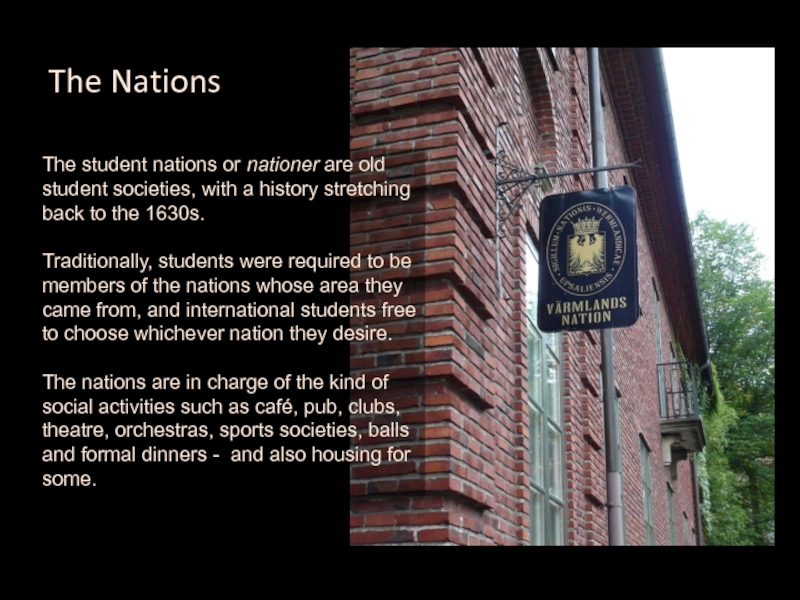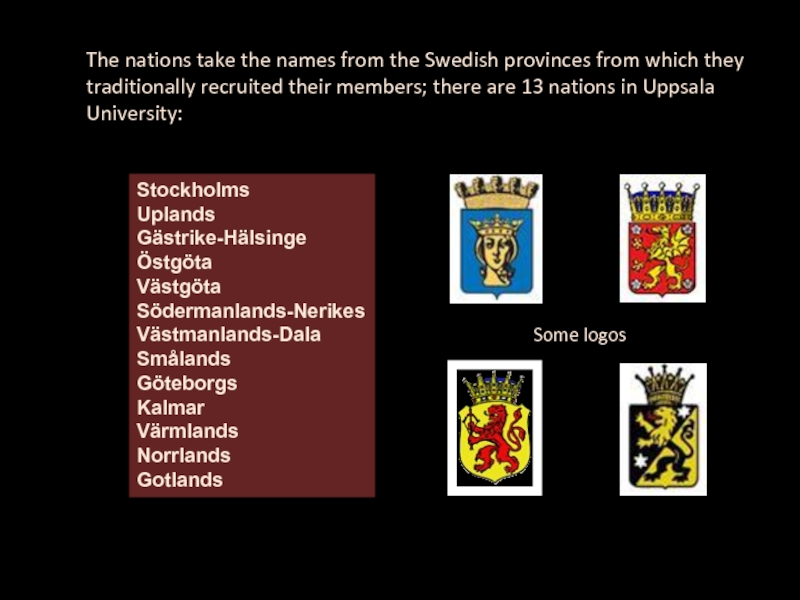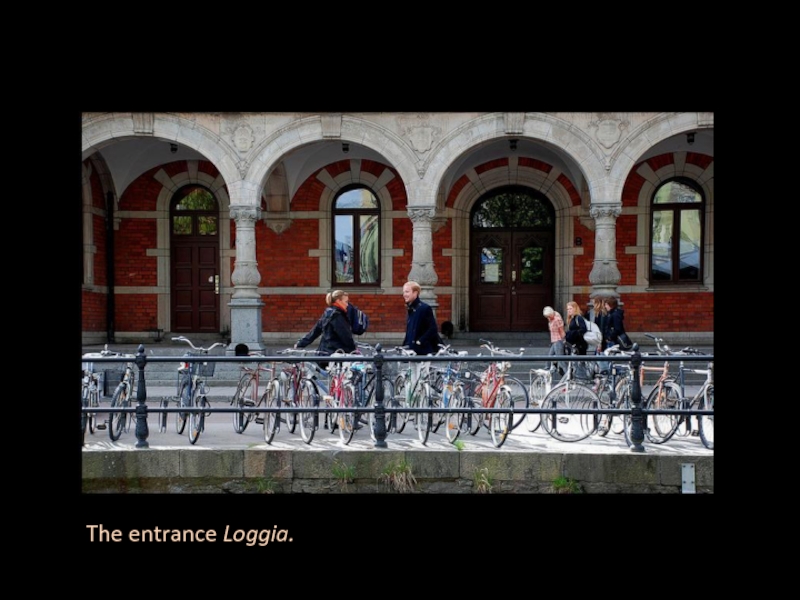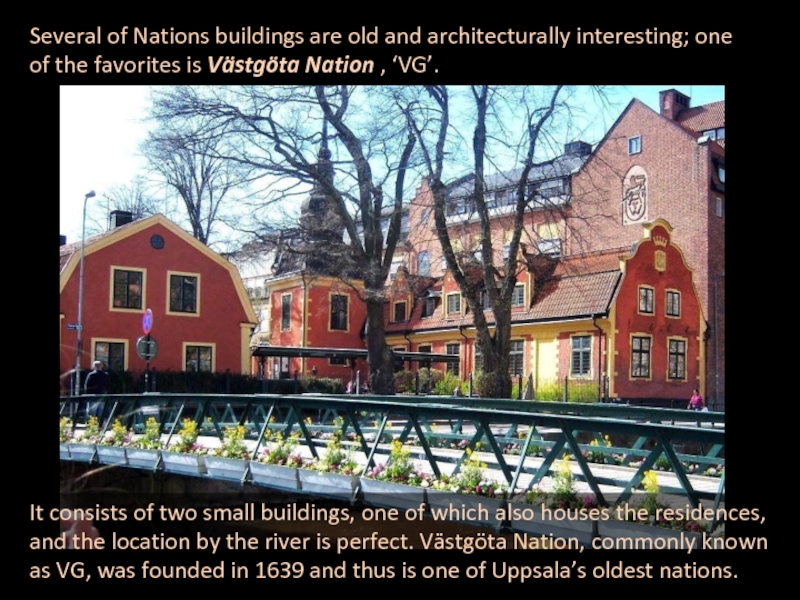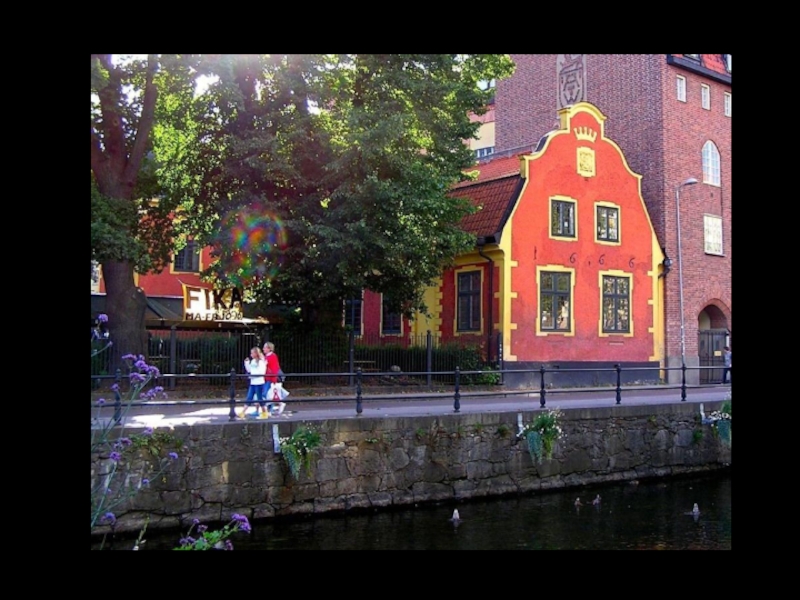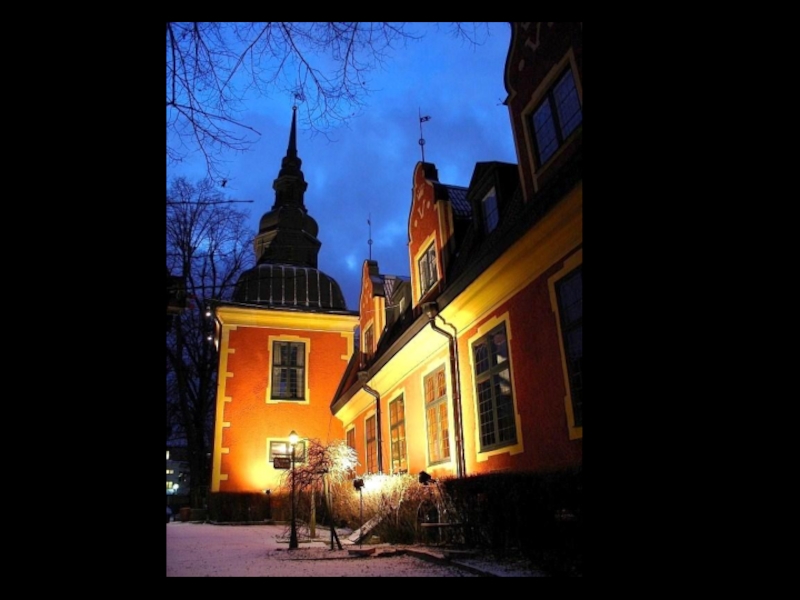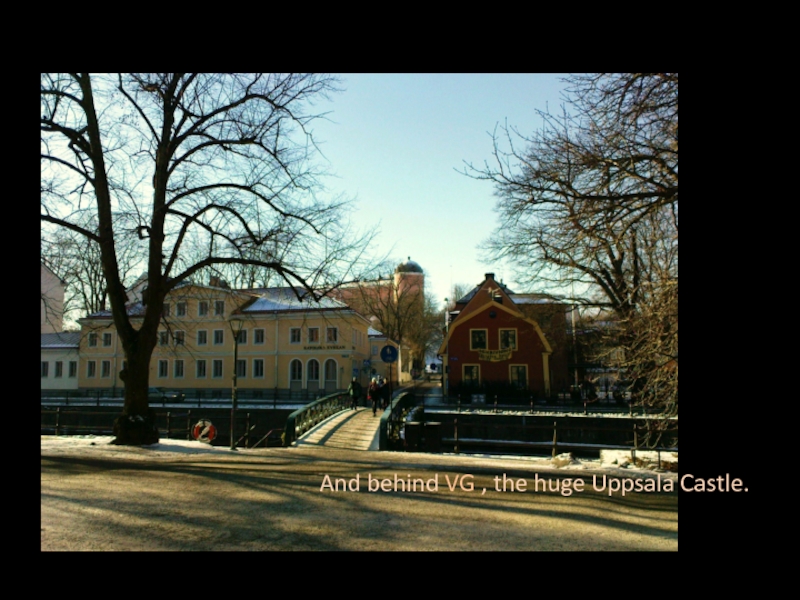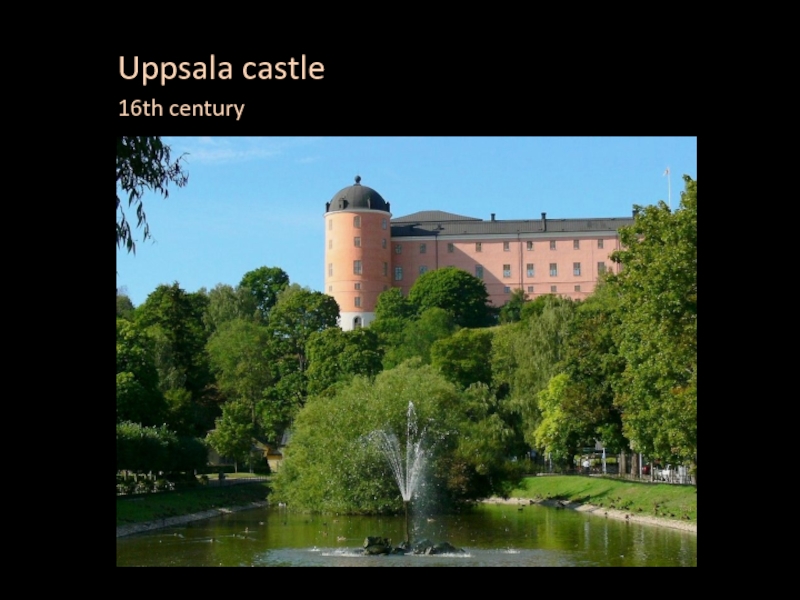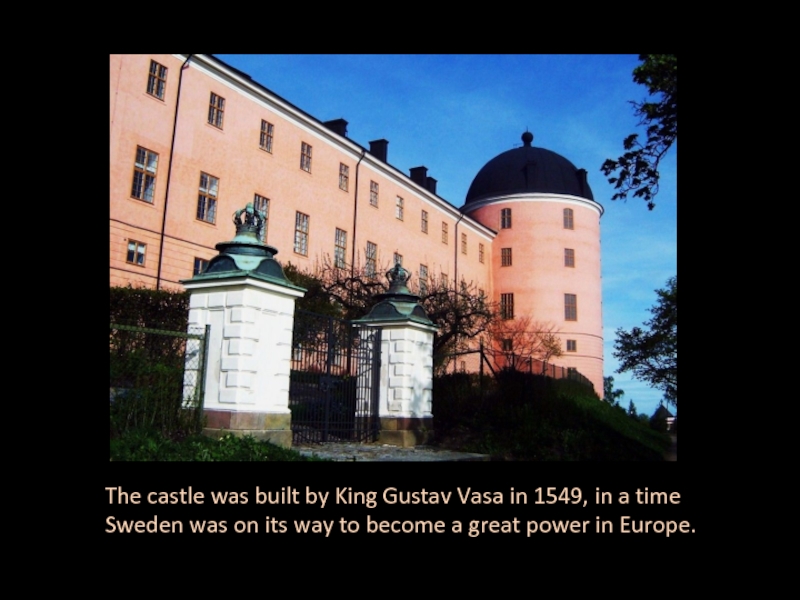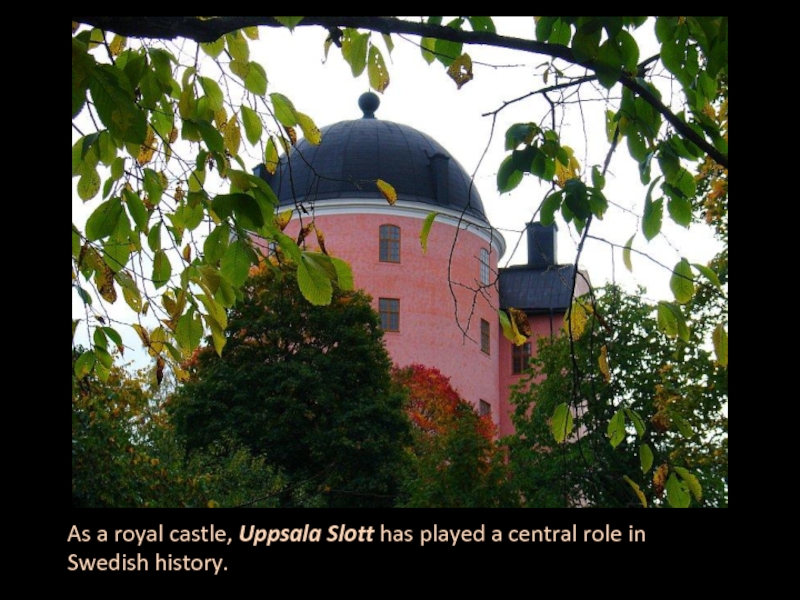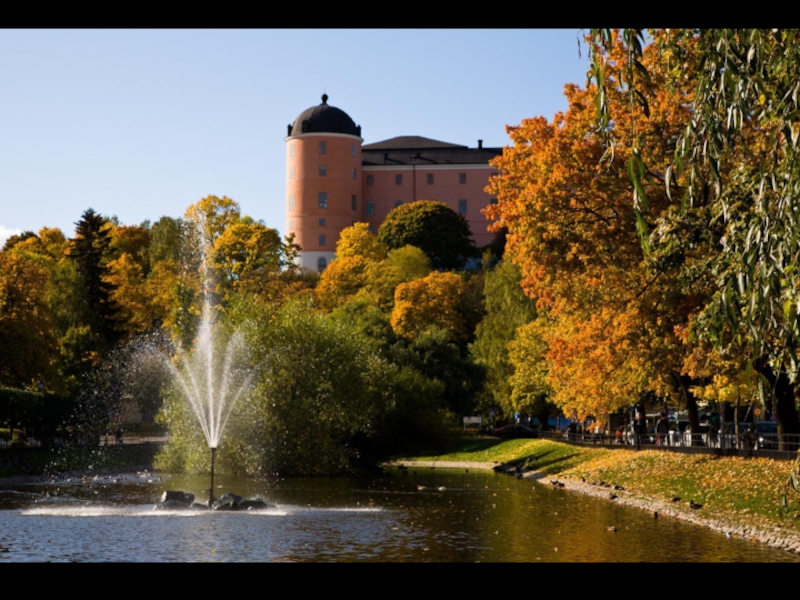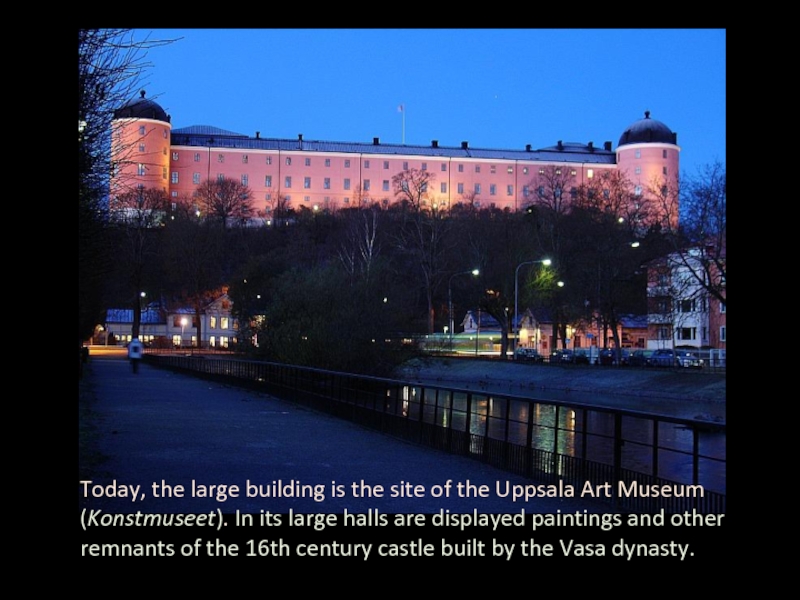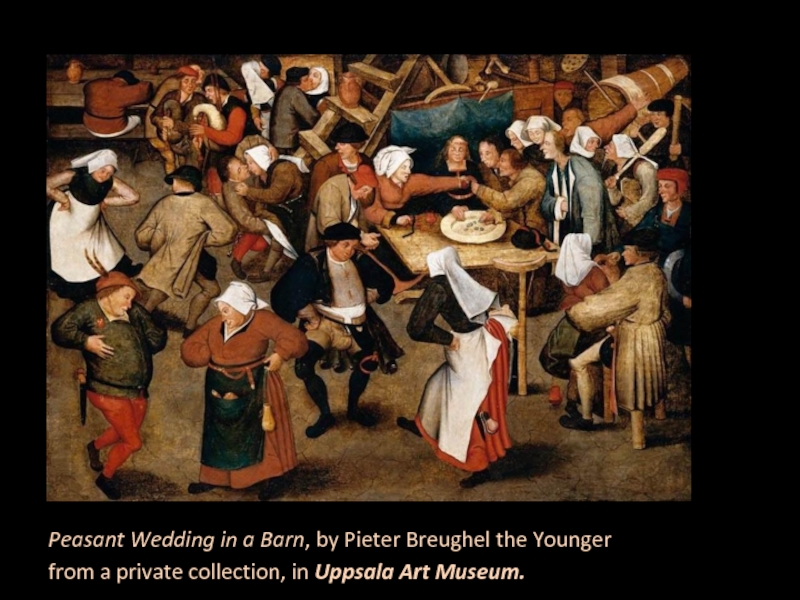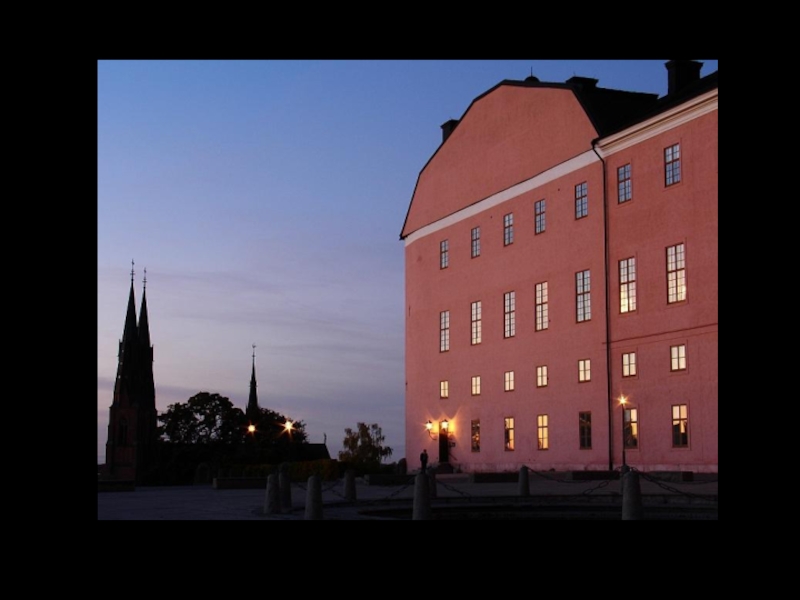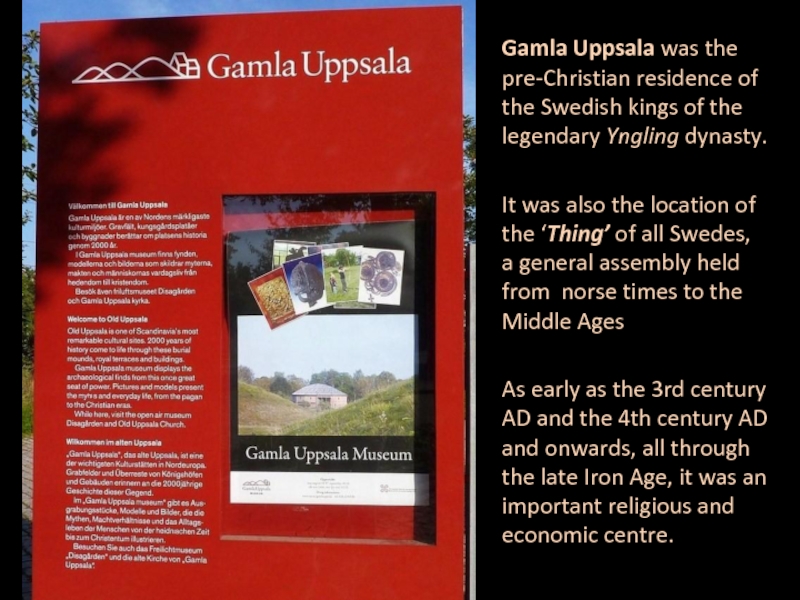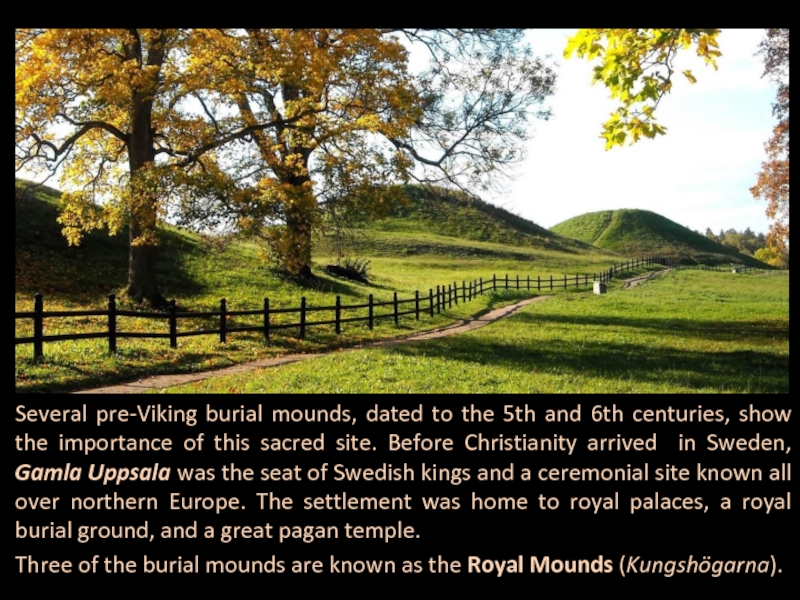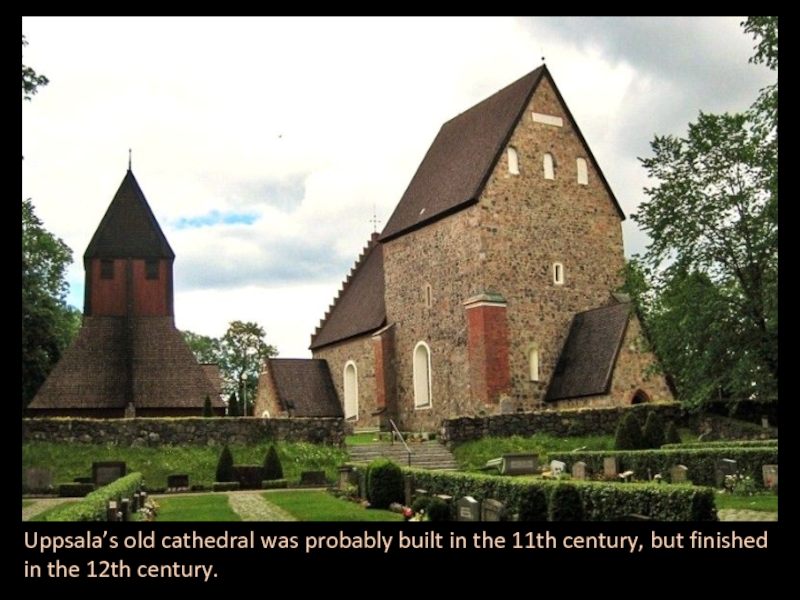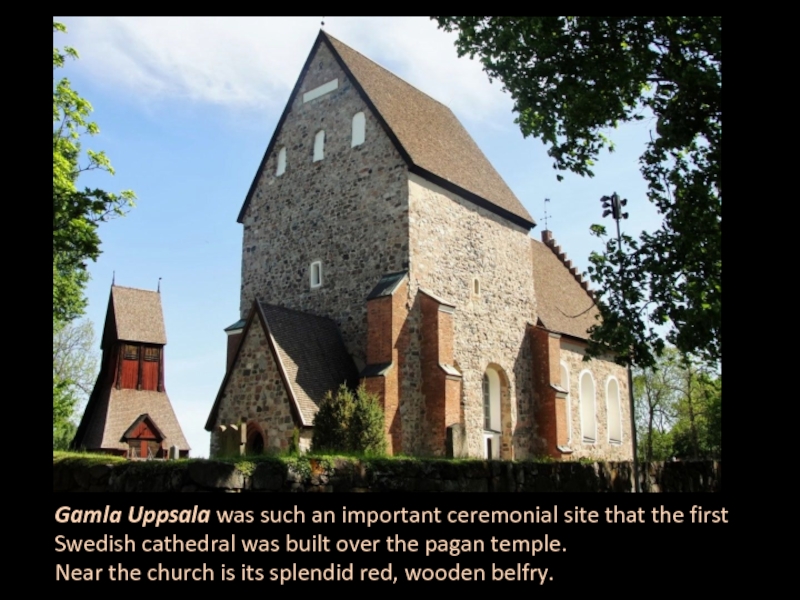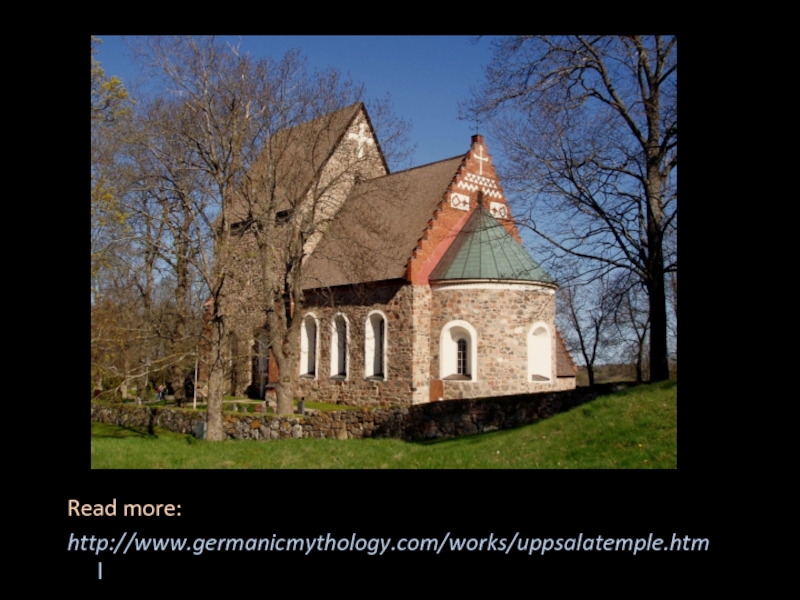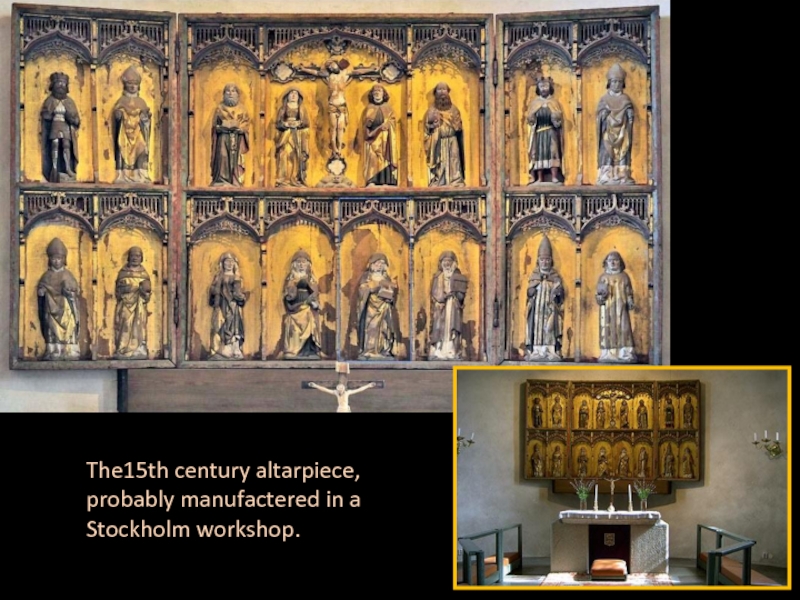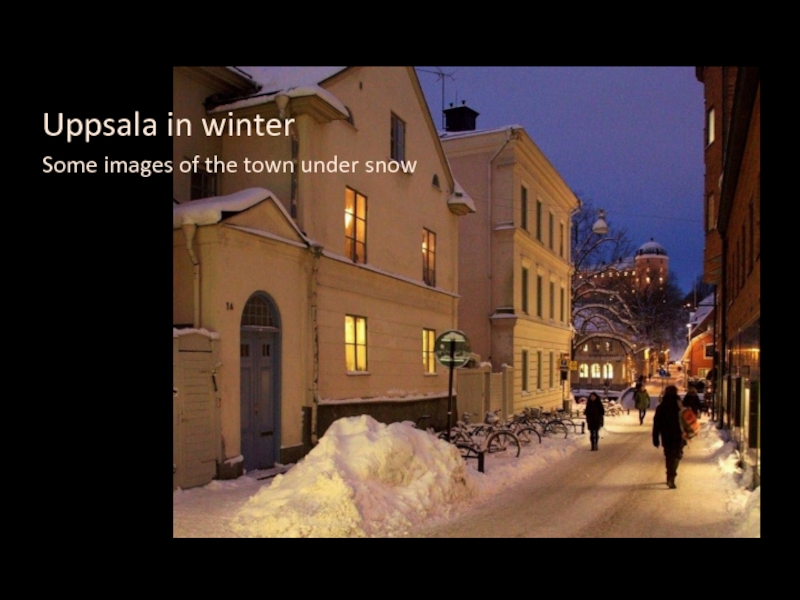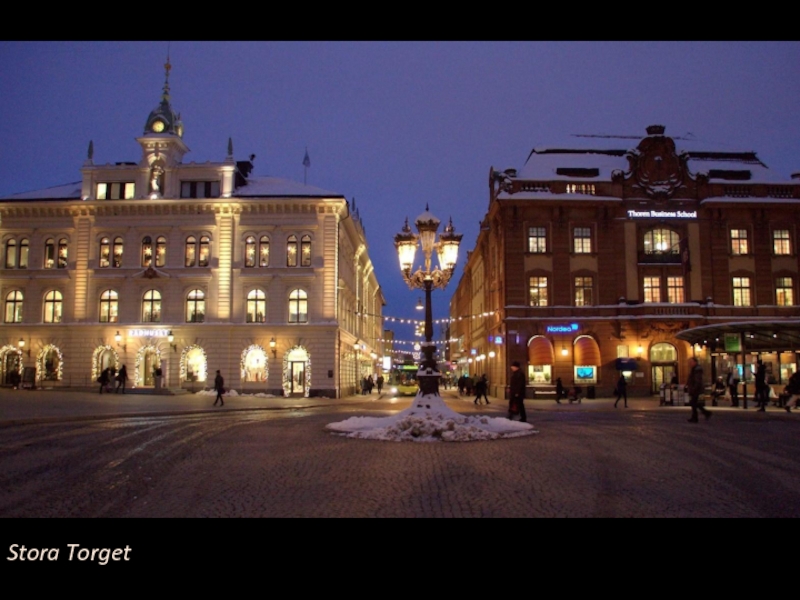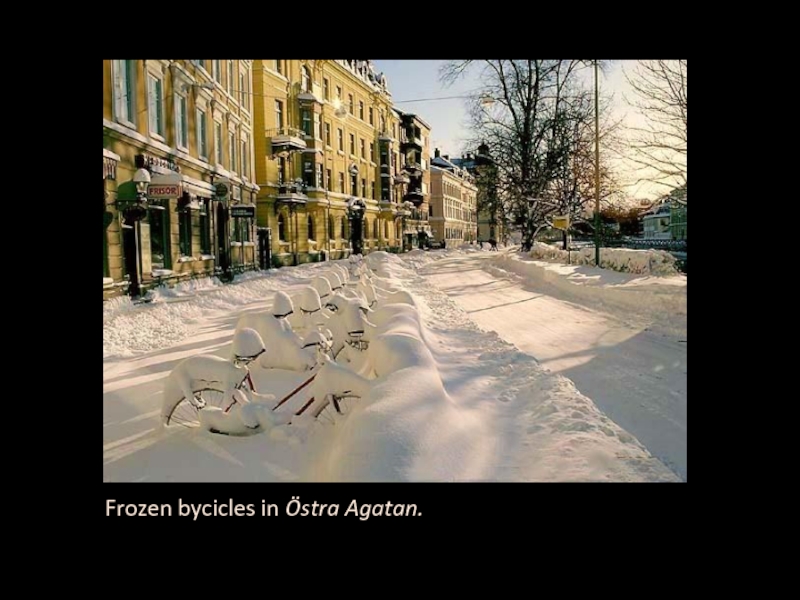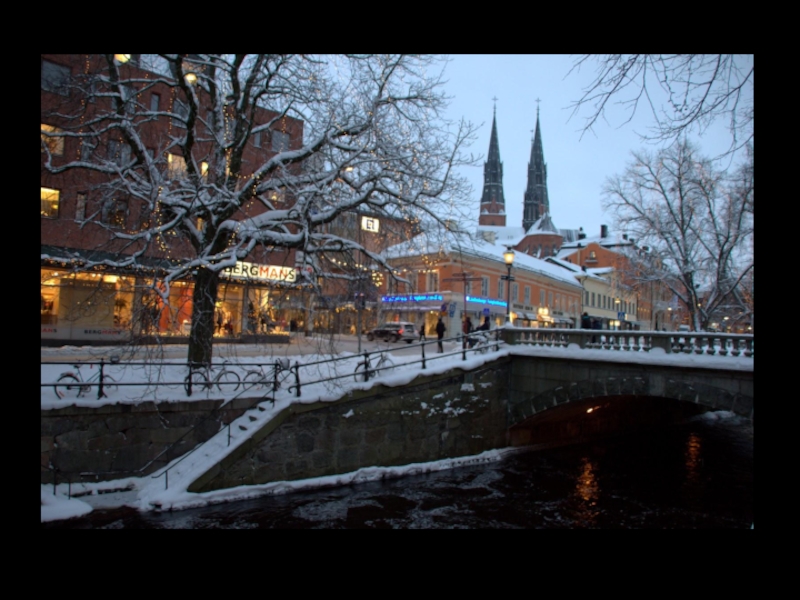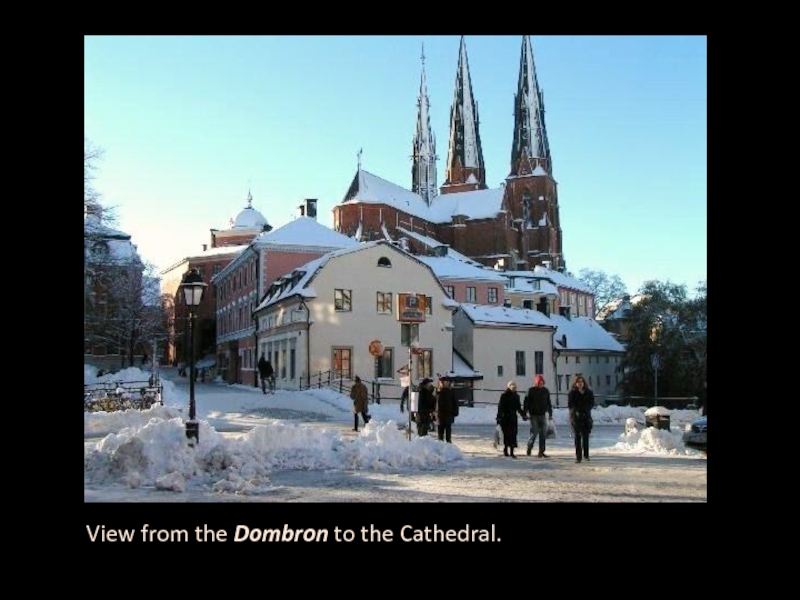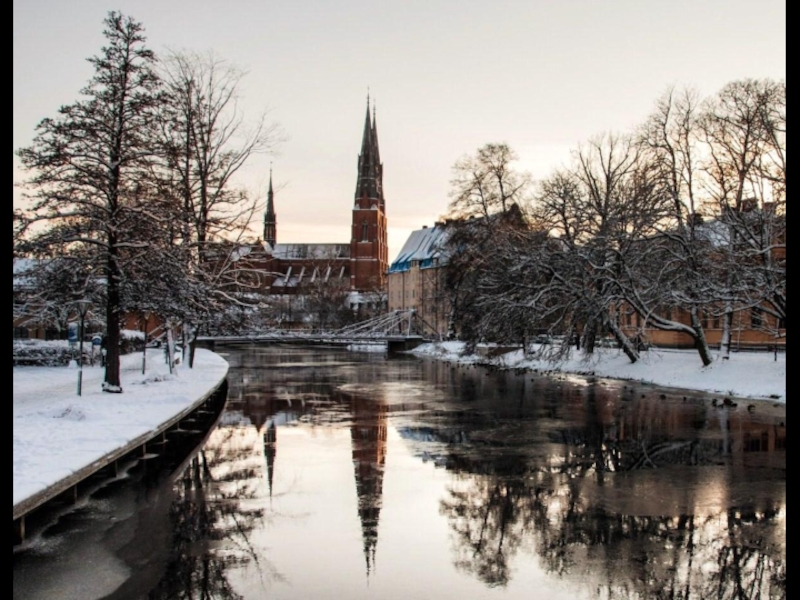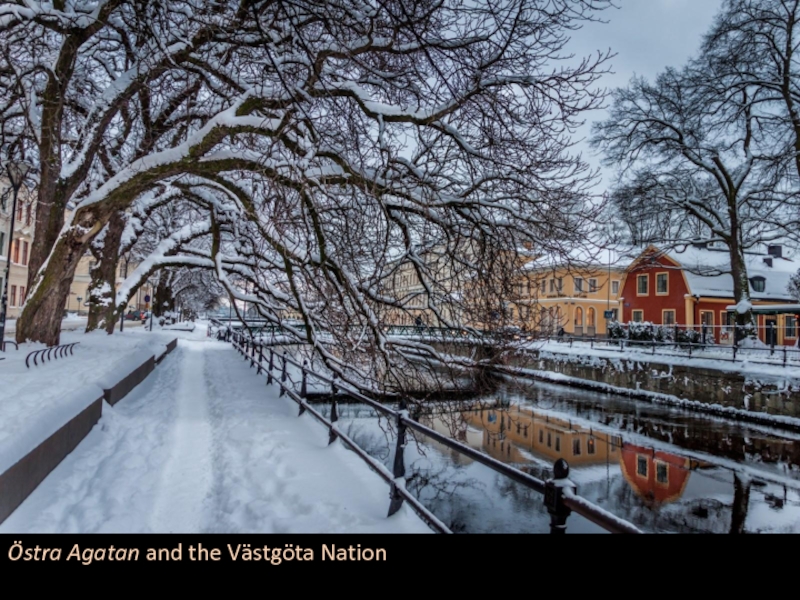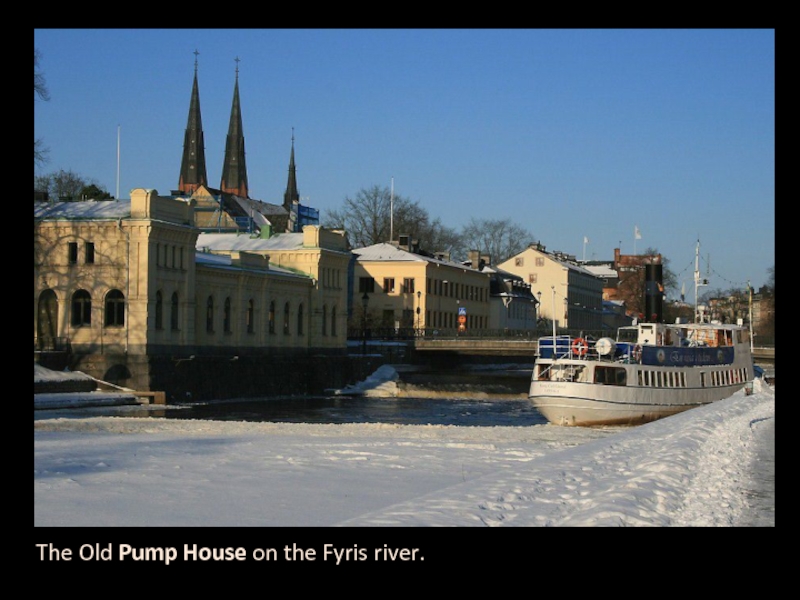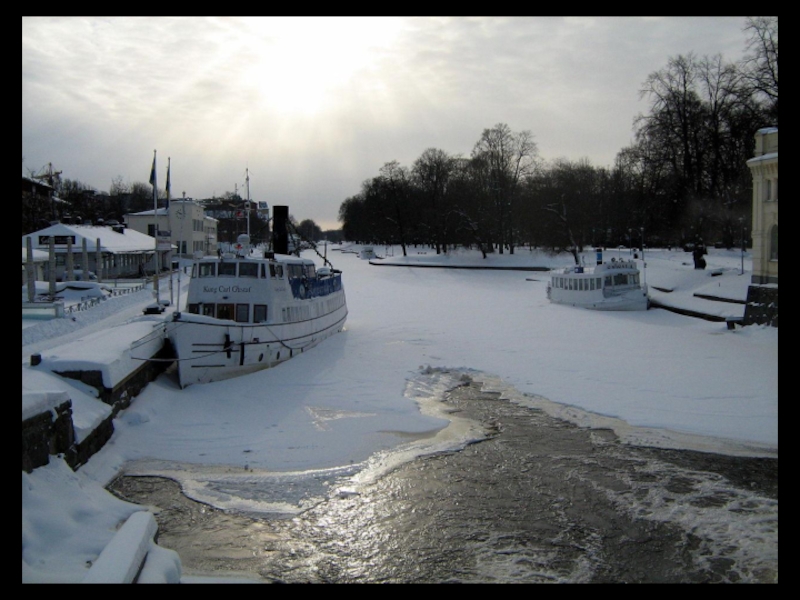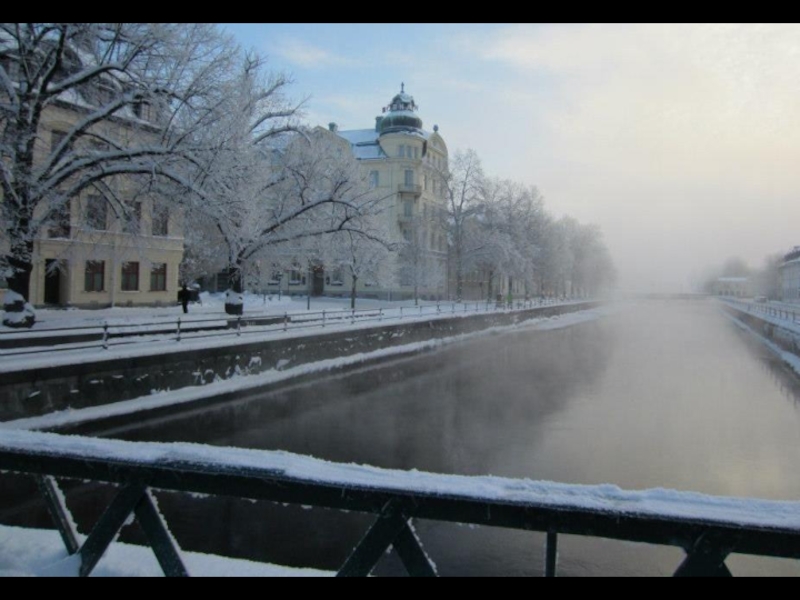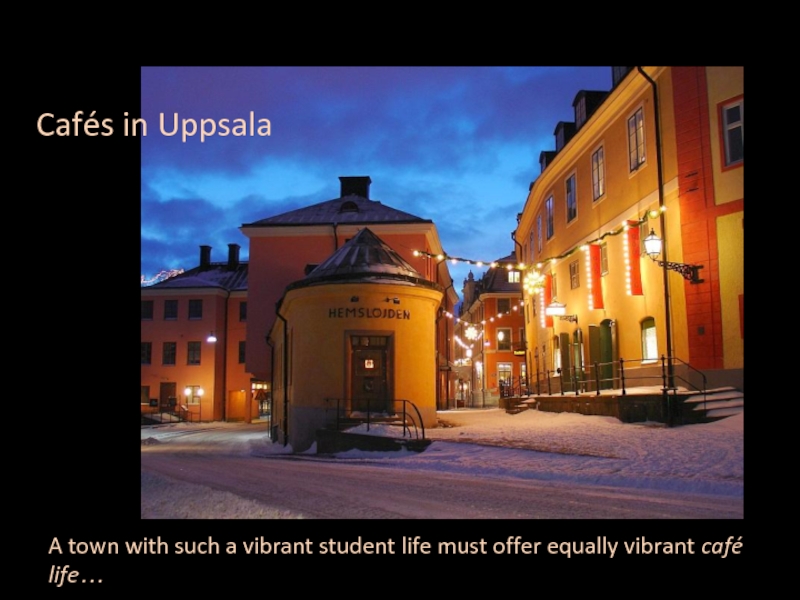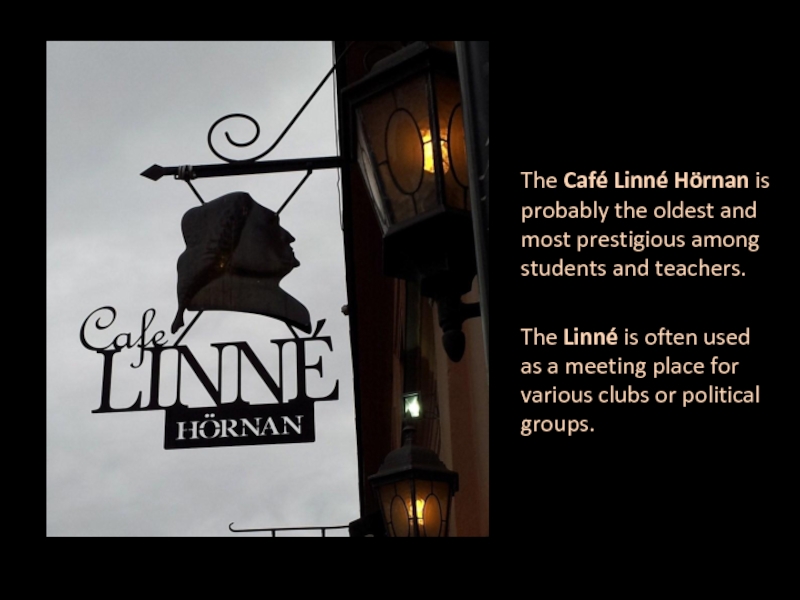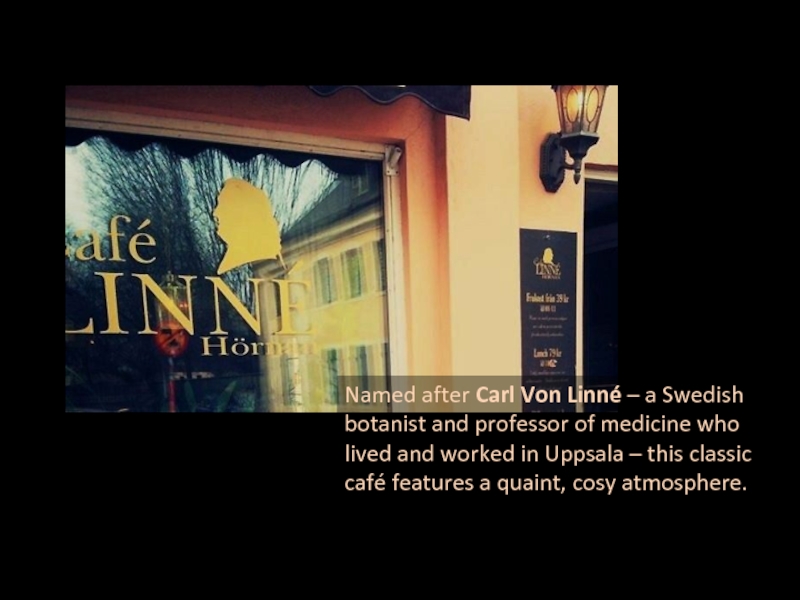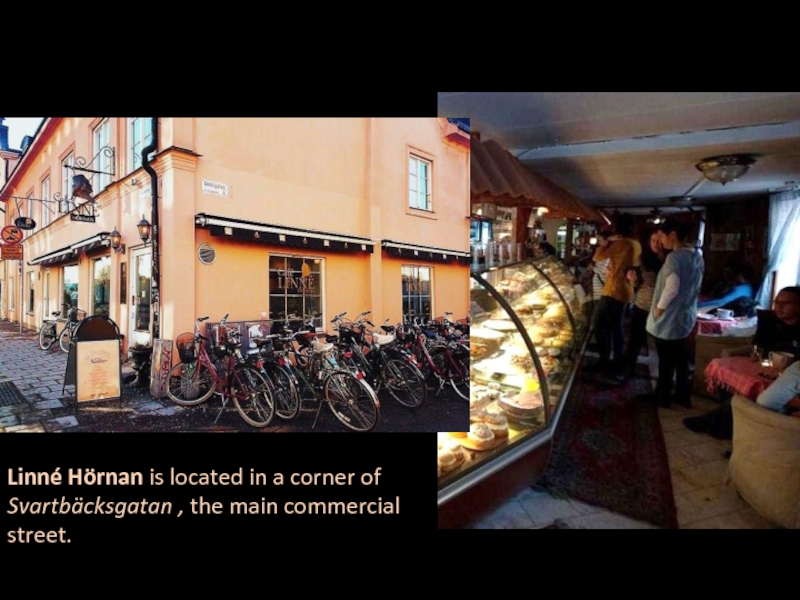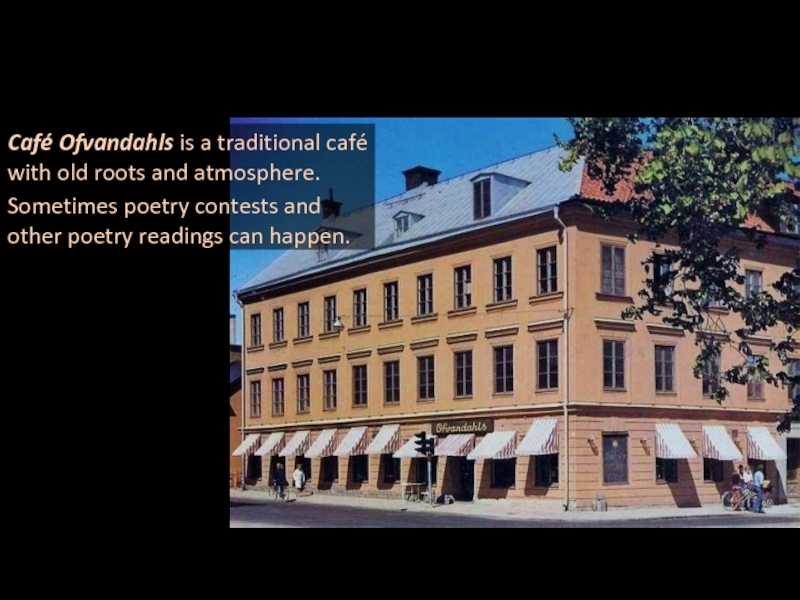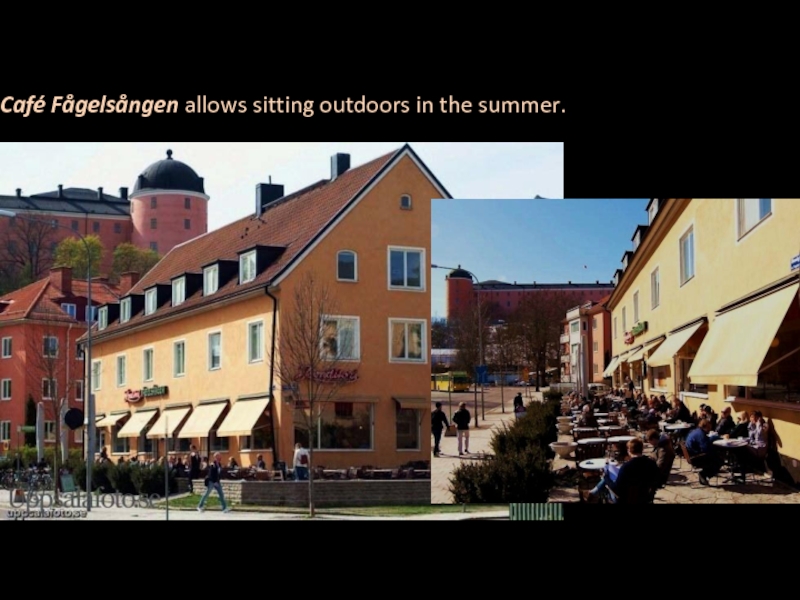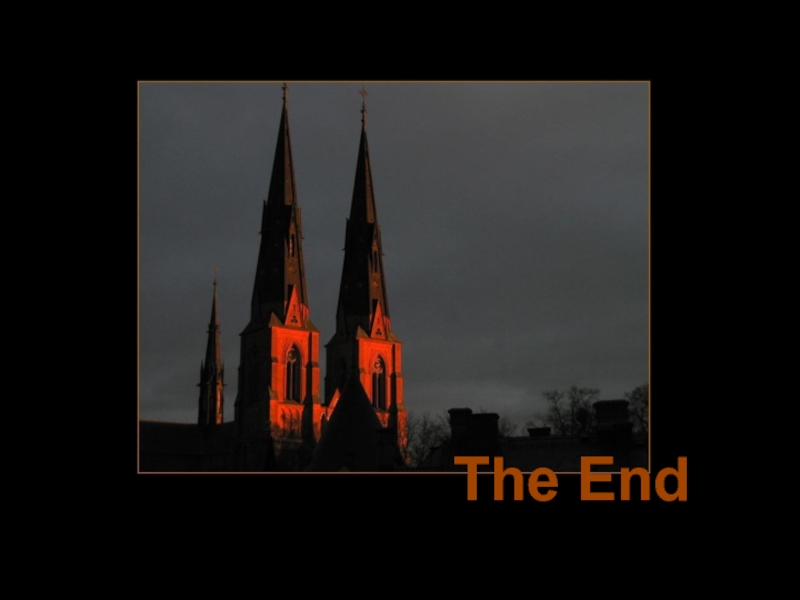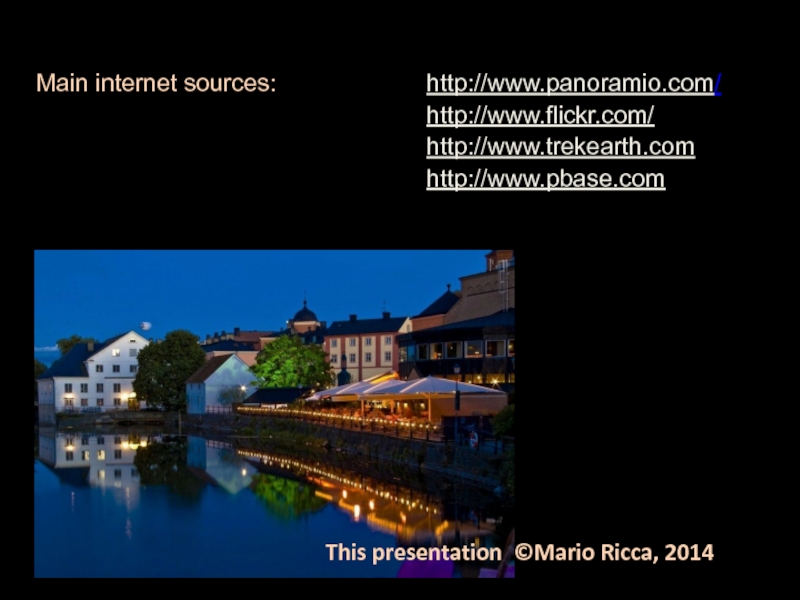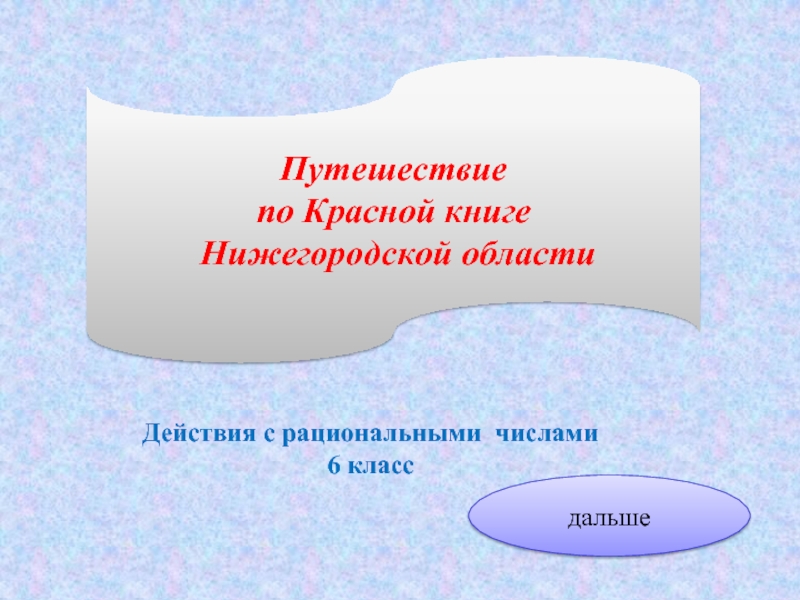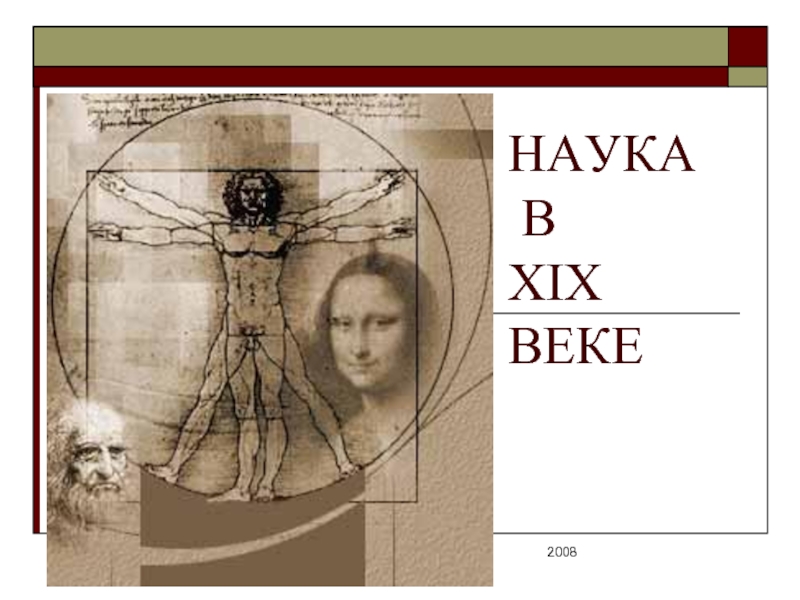- Главная
- Разное
- Дизайн
- Бизнес и предпринимательство
- Аналитика
- Образование
- Развлечения
- Красота и здоровье
- Финансы
- Государство
- Путешествия
- Спорт
- Недвижимость
- Армия
- Графика
- Культурология
- Еда и кулинария
- Лингвистика
- Английский язык
- Астрономия
- Алгебра
- Биология
- География
- Детские презентации
- Информатика
- История
- Литература
- Маркетинг
- Математика
- Медицина
- Менеджмент
- Музыка
- МХК
- Немецкий язык
- ОБЖ
- Обществознание
- Окружающий мир
- Педагогика
- Русский язык
- Технология
- Физика
- Философия
- Химия
- Шаблоны, картинки для презентаций
- Экология
- Экономика
- Юриспруденция
UppsalaA swedish University townfrom the 15th century презентация
Содержание
- 1. UppsalaA swedish University townfrom the 15th century
- 2. Uppsala is the fourth largest city of
- 3. Uppsala is one of the oldest and
- 4. Uppsala Cathedral, the University (left) and the Fyrisån (Fyris river) .
- 5. The town developped on both banks of
- 6. The civic centre: Stora Torget (Main Square) and the Radhaus (townhall) building.
- 7. The Townhall dates from 1883.
- 8. Stora Torget was built in the 17th
- 9. The railway station is close by. This
- 10. All through the year, the Railway Station’s
- 11. Close to the main square is the
- 13. Several bridges take across the river: pedestrian
- 14. Dombron marks the entrance to the cobblestone-floored cultural district.
- 15. From Stora Torget, the Västgötaspången is one
- 16. The bridge, often crowded in summer, joins
- 17. A quiet evening in the often crowded Östra Ågatan.
- 18. The two walkways bordering Fyris river, Östra
- 19. Östra Ågatan
- 20. The East walkway: Lines of Trees, small docks, benches and café terraces.
- 22. The old Pump House (Pump-huset), on the
- 23. This stairway down to the river in
- 24. Uppsala’s waterside resort.
- 25. Upplandsmuseet, a cultural and historic county museum,
- 26. Östra Agatan in Autumn colours.
- 28. And still later.
- 30. Uppsala Cathedral (Domkirke)
- 31. This majestic structure of glowing red brick,
- 32. The cathedral is built in the Gothic
- 34. It houses the tombs of the 16th-century
- 42. The old town of Uppsala
- 43. Around the cathedral, a maze of medieval
- 44. St. Erik’s torg A picturesque spot close to the Dombron
- 45. S:t Erik’s Torg in an old print.
- 46. The Cupola of the old Gustavianum is visible over the roofs.
- 49. This is Valvgränd (Arch Lane), in Valvgatan, a well-known meeting point.
- 52. Valvgatan is a pedestrian-only alley on the West side of Uppsala.
- 53. The Skytteanum is a private House for
- 55. Uppsala University and the ‘Nations’
- 56. The majestic entrance Hall of the University’s main building.
- 58. Carolina Rediviva, the main Library of Uppsala University.
- 59. The building was begun in 1820 and
- 62. The Codex Argenteus, known as "Silver Bible”,
- 64. The Gustavianum This was the former main
- 65. The majestic cupola is a town landmark.
- 66. The Gustavianum is Uppsala University’s older building.
- 68. The Anatomical Theater Used to teach
- 70. Museum Gustavianum. A pair of telescopes from the 17th century.
- 72. The Nations The student nations or nationer
- 73. The nations take the names from the
- 74. Norrlands Nation claims to be largest nation;
- 75. The entrance Loggia.
- 76. It consists of two small buildings, one
- 77. With about 1200 members, Västgöta Nation is
- 80. And behind VG , the huge Uppsala Castle.
- 81. Uppsala castle 16th century
- 82. The castle was built by King Gustav
- 83. As a royal castle, Uppsala Slott has played a central role in Swedish history.
- 85. Today, the large building is the site
- 86. Peasant Wedding in a Barn, by Pieter
- 88. Gamla Uppsala was the pre-Christian residence of
- 89. Several pre-Viking burial mounds, dated to the
- 90. Uppsala’s old cathedral was probably built in
- 91. Gamla Uppsala was such an important ceremonial
- 92. Read more: http://www.germanicmythology.com/works/uppsalatemple.html
- 93. The15th century altarpiece, probably manufactered in a Stockholm workshop.
- 94. Uppsala in winter Some images of the town under snow
- 95. Stora Torget
- 96. Frozen bycicles in Östra Agatan.
- 97. The Dombron bridge
- 99. View from the Dombron to the Cathedral.n
- 101. Östra Agatan and the Västgöta Nation
- 102. The Old Pump House on the Fyris river.
- 105. Cafés in Uppsala A town with such
- 106. The Café Linné Hörnan is probably the
- 107. Named after Carl Von Linné – a
- 108. Linné Hörnan is located in a corner of Svartbäcksgatan , the main commercial street.
- 109. Café Ofvandahls is a traditional café with
- 111. Café Fågelsången allows sitting outdoors in the summer.
- 112. The End
- 113. This presentation ©Mario Ricca, 2014 Main internet sources: http://www.panoramio.com/ http://www.flickr.com/ http://www.trekearth.com http://www.pbase.com
Слайд 2Uppsala is the fourth largest city of Sweden, 80 km north
Population: ~ 150 000
Coordinates: 59°51′ N, 17°38′ E
Слайд 3Uppsala is one of the oldest and most prestigious University towns
The first settlement, known as Gamla Uppsala, dates back from pre-Viking times, and was perhaps the main centre of pagan cult in Sweden.
As the scandinavian gods were decaying in popularity, a rival christian borg was founded around 1164 at the port of Old Uppsala, and by 1274 (new) Uppsala had grown larger than its old predecessor. A large gothic cathedral was built in 1435, the magnificent Domkirke that still dominates the town. The University followed, founded in 1477.
Слайд 5The town developped on both banks of Fyris river, the central
Слайд 8Stora Torget was built in the 17th century, on a dried
Слайд 9The railway station is close by. This is the main door
Слайд 10All through the year, the Railway Station’s bycicle park displays a
Слайд 11Close to the main square is the smaller, older, not-square Gamla
Слайд 13Several bridges take across the river: pedestrian bridges in iron and
It was built in 1760 , and the name refers to its location near the cathedral.
Слайд 15From Stora Torget, the Västgötaspången is one of several foot bridges
.
Слайд 16The bridge, often crowded in summer, joins the two banks of
Слайд 18The two walkways bordering Fyris river, Östra Ågatan - more scenic
Слайд 22The old Pump House (Pump-huset), on the West side, seen from
Слайд 23This stairway down to the river in Östra Agatan is the
Слайд 25Upplandsmuseet, a cultural and historic county museum, housed in the old
Слайд 31This majestic structure of glowing red brick, crowned by three soaring
Слайд 32The cathedral is built in the Gothic style and is one
Слайд 34It houses the tombs of the 16th-century Swedish king Gustav Vasa,
Слайд 43Around the cathedral, a maze of medieval alleys, most frequently jammed
For these are university grounds.
Слайд 53The Skytteanum is a private House for the Professor in Eloquence
Слайд 55Uppsala University and the ‘Nations’
The university, founded in 1477, flourished during
For centuries it ranks among the best in Europe.
Слайд 59The building was begun in 1820 and completed in 1841.
The name,
Слайд 62The Codex Argenteus, known as "Silver Bible”, is a 6th-century manuscript
The complete work is on permanent display at the Carolina Rediviva library in Uppsala. It is the most precious book in Sweden.
The final leaf of the codex, fol. 336, was discovered in 1970 in Speyer, Germany. The leaf contains the final verses of the Gospel of Mark.
Слайд 64The Gustavianum
This was the former main building of Uppsala University; the
The name Gustavianum comes from swedish King Gustavus Adolphus,
who financed its construction.
Слайд 66The Gustavianum is Uppsala University’s older building. Under the cupola is
Since 1997 the building became home for the Museum Gustavianum.
Слайд 68The
Anatomical Theater
Used to teach anatomy in the first modern universities, it
This one in the Gustavianum has an octogonal shape.
Слайд 72The Nations
The student nations or nationer are old student societies, with
Traditionally, students were required to be members of the nations whose area they came from, and international students free to choose whichever nation they desire.
The nations are in charge of the kind of social activities such as café, pub, clubs, theatre, orchestras, sports societies, balls and formal dinners - and also housing for some.
Слайд 73The nations take the names from the Swedish provinces from which
Stockholms
Uplands
Gästrike-Hälsinge
Östgöta
Västgöta
Södermanlands-Nerikes
Västmanlands-Dala
Smålands
Göteborgs
Kalmar
Värmlands
Norrlands
Gotlands
Some logos
Слайд 74Norrlands Nation claims to be largest nation; it has a powerful
Слайд 76It consists of two small buildings, one of which also houses
Several of Nations buildings are old and architecturally interesting; one of the favorites is Västgöta Nation , ‘VG’.
Слайд 77With about 1200 members, Västgöta Nation is one of the smaller
Слайд 82The castle was built by King Gustav Vasa in 1549, in
Слайд 85Today, the large building is the site of the Uppsala Art
Слайд 86Peasant Wedding in a Barn, by Pieter Breughel the Younger
from
Слайд 88Gamla Uppsala was the pre-Christian residence of the Swedish kings of
It was also the location of the ‘Thing’ of all Swedes, a general assembly held from norse times to the Middle Ages
As early as the 3rd century AD and the 4th century AD and onwards, all through the late Iron Age, it was an important religious and economic centre.
Слайд 89Several pre-Viking burial mounds, dated to the 5th and 6th centuries,
Three of the burial mounds are known as the Royal Mounds (Kungshögarna).
Слайд 90Uppsala’s old cathedral was probably built in the 11th century, but
Слайд 91Gamla Uppsala was such an important ceremonial site that the first
Near the church is its splendid red, wooden belfry.
Слайд 105Cafés in Uppsala
A town with such a vibrant student life must
Слайд 106The Café Linné Hörnan is probably the oldest and most prestigious
The Linné is often used as a meeting place for various clubs or political groups.
Слайд 107Named after Carl Von Linné – a Swedish botanist and professor
Слайд 109Café Ofvandahls is a traditional café with old roots and atmosphere.
Sometimes poetry contests and other poetry readings can happen.

